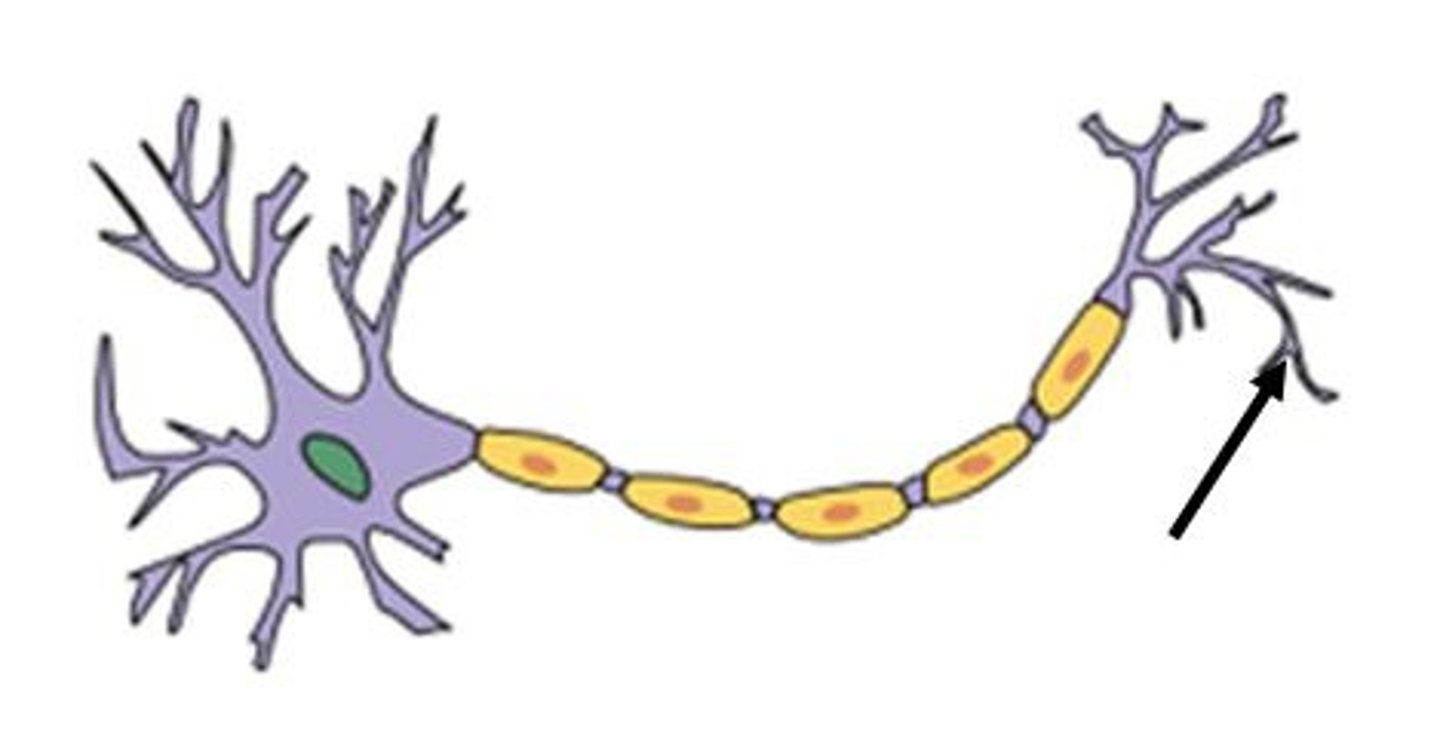Lecture 2 Transport of Substances Through the Cell Membrane and Action potentials.
1/61
There's no tags or description
Looks like no tags are added yet.
Name | Mastery | Learn | Test | Matching | Spaced |
|---|
No study sessions yet.
62 Terms
Passive transport
What type of transport does NOT require energy from ATP?
1. Simple diffusion
2. Facilitated diffusion
3. Filtration
4. Osmosis
What are the 4 transport mechanisms that are passive transport?
Active transport
What transport mechanism requires energy from ATP against a concentration gradient?
1. Carrier
2. Primary active transport
3. Bulk transport (Endocytosis, Exocytosis, Phagocytosis, Pinocytosis)
4. Secondary active transport
What are the three transport mechanisms of active transport?
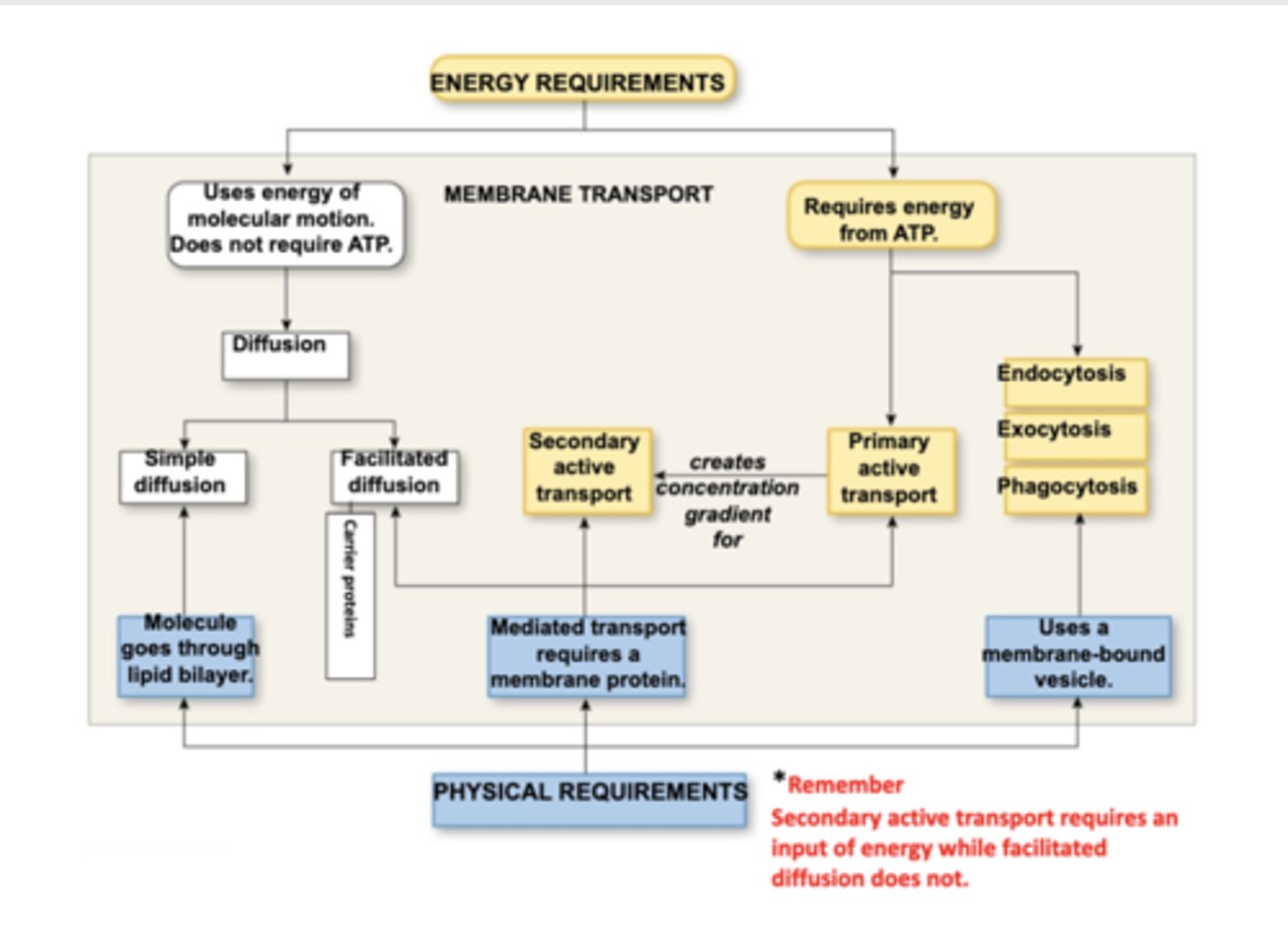
Fluid – the phospholipid bilayer is viscous and individual phospholipids can move position
Mosaic – the phospholipid bilayer is embedded with proteins, resulting in a mosaic of components.
Cell membranes are represented according to a fluid-mosaic model ,due to the fact that they are?

1. Phospholipids
2. Cholesterol
3. Proteins
What are three components of the plasma membrane?

Form a bilayer with phosphate heads facing outwards and fatty acid tails facing inwards
What are phospholipids of the plasma membrane?
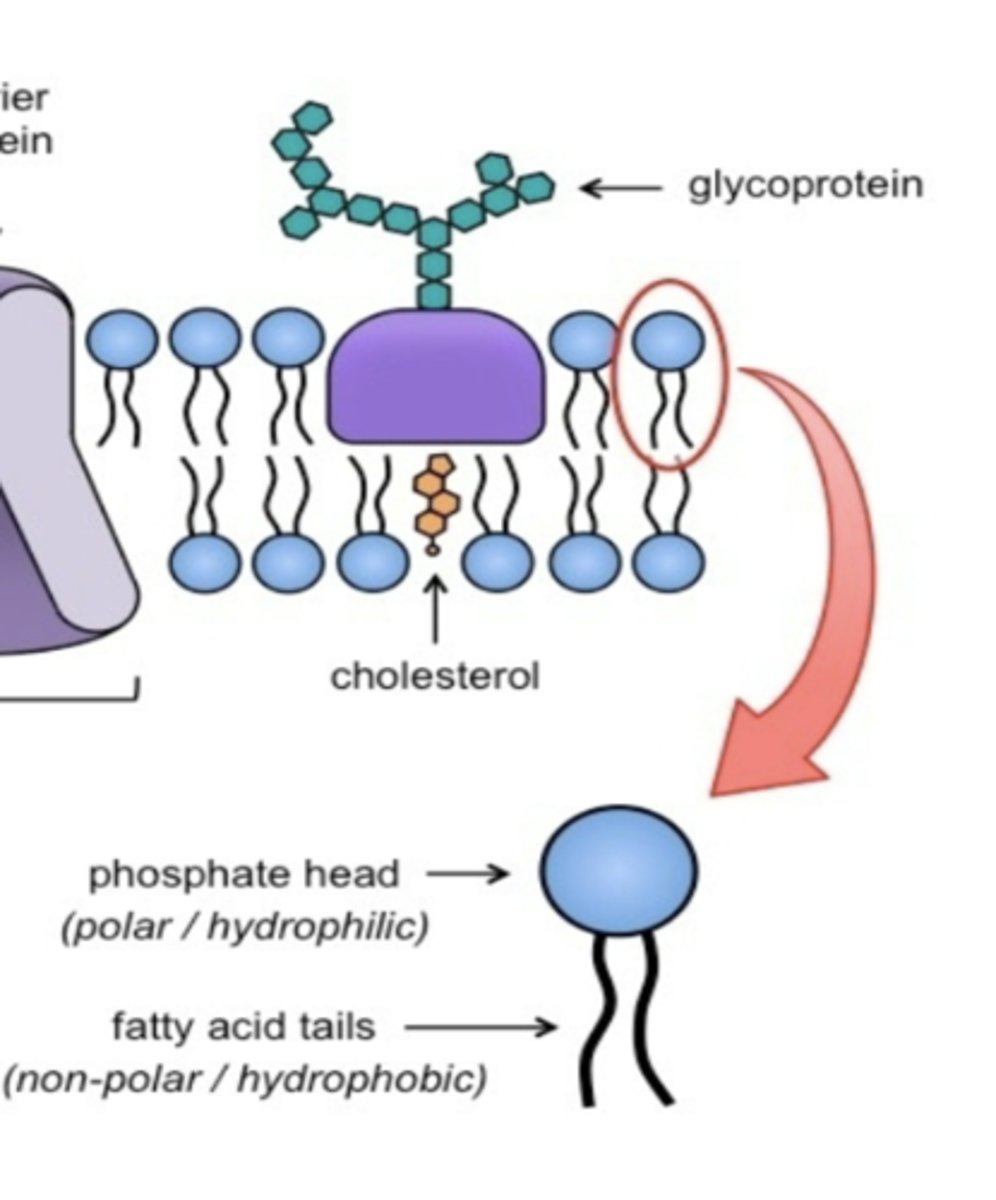
Found in animal cell membranes and functions to improve stability and reduce fluidity
Where is cholesterol found and what is its function in the plasma membrane?
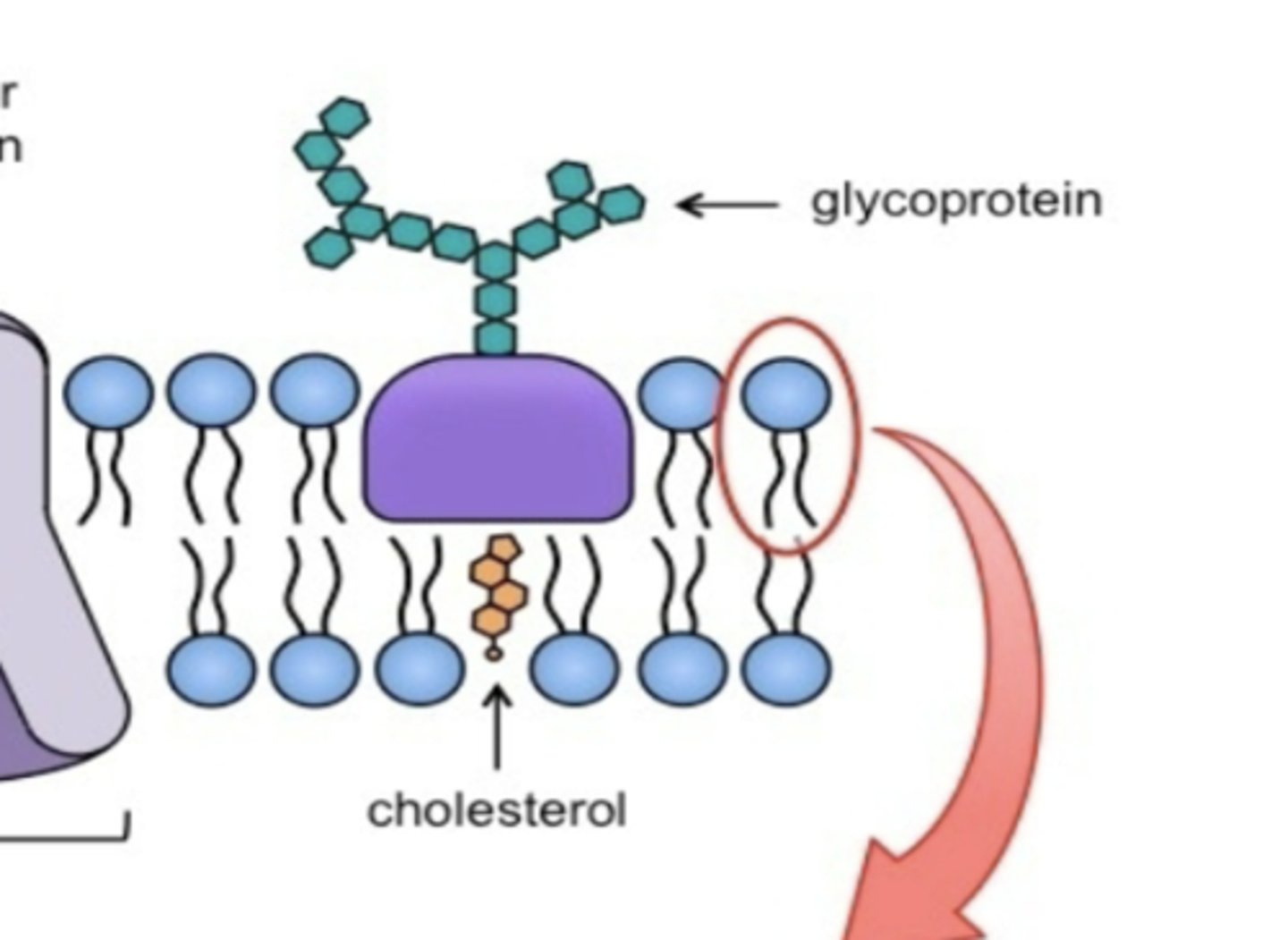
2/3
What fraction is the ICF of the total body water volume?
1/3
What fraction is the ECF of the body's fluid volume?
1. Interstitial fluid (IF)
2. Plasma
What two components that are apart of the ECF?
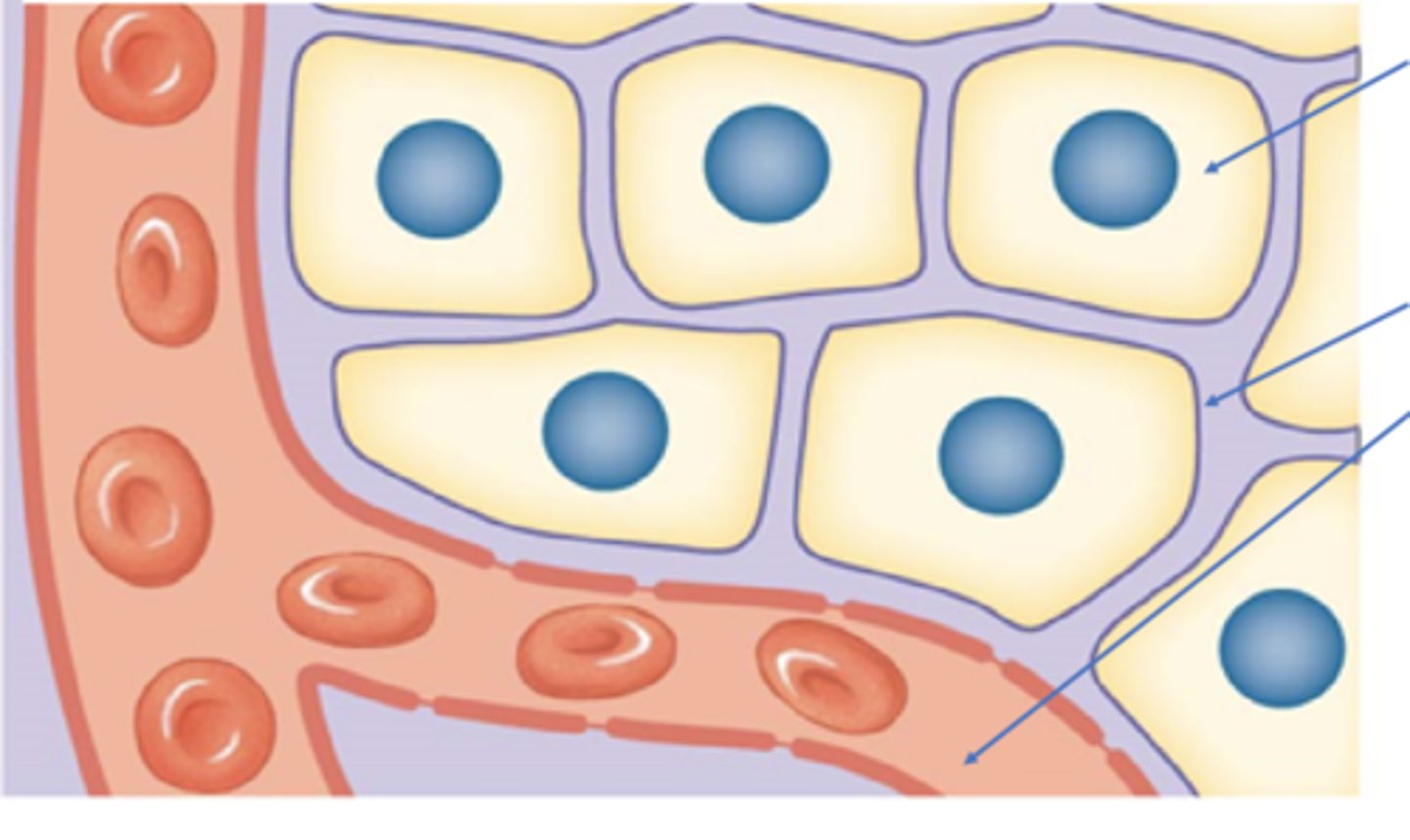
Lies between the circulatory system and the cells, is 75% of the ECF volume.
What does the Interstitial fluid lie between? What percentage of the IF is apart of the ECF?
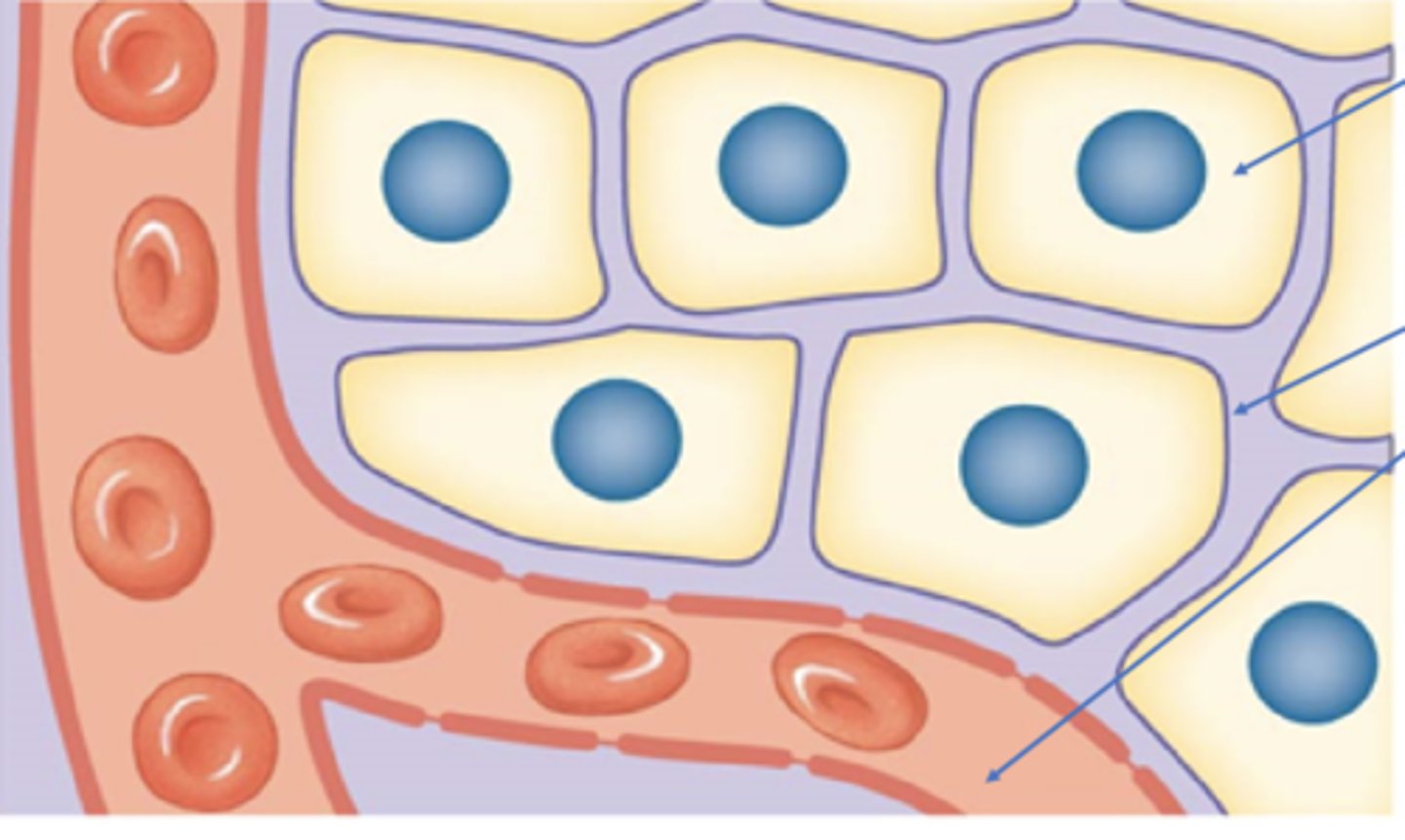
25% of the ECF
must cross the leaky exchange epithelium of the capillary wall.
Plasma is what percentage of the ECF? Substances moving between the plasma and interstitial fluid must cross what?

always happens in favor of the concentration gradient. Based on kinetic energy of molecules which causes their movement.
- No ATP required
- Moves from high to low concentration (small lipid soluble substances)
Simple diffusion
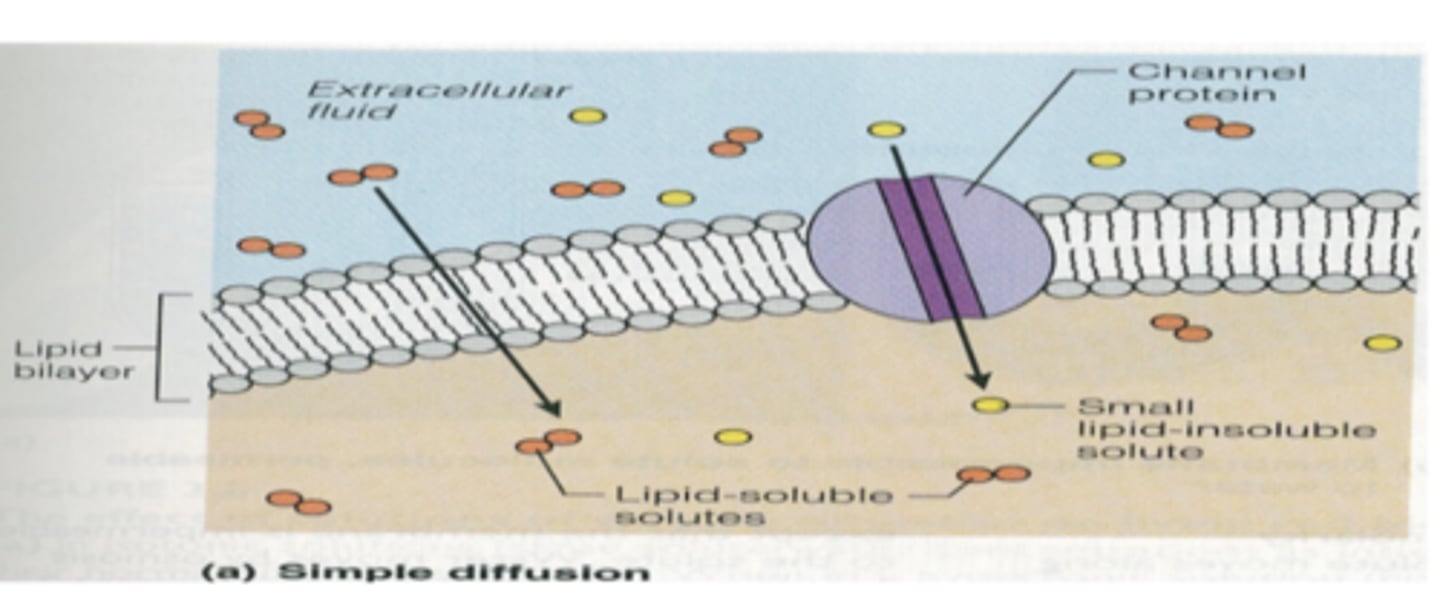
Fick's law of diffusion
Each substance diffusion rate depends on several factors and its defined by what law?
movement of solvent
What is Osmosis?
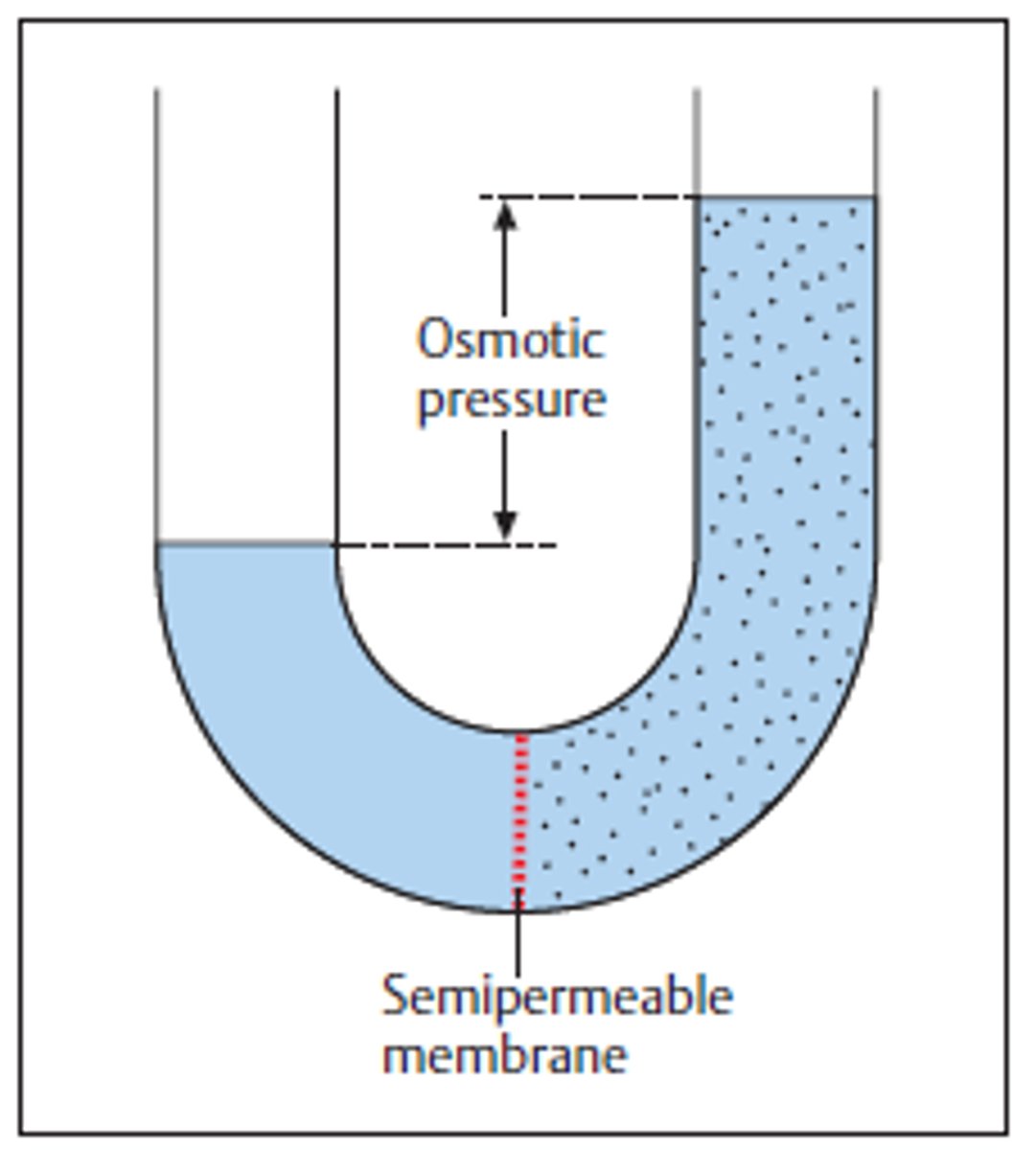
Movement of solvent and solute due to hydrostatic pressure gradient.
What is Filtration?

Movement of water and solutes together due to a pressure gradient
What is bulk flow?
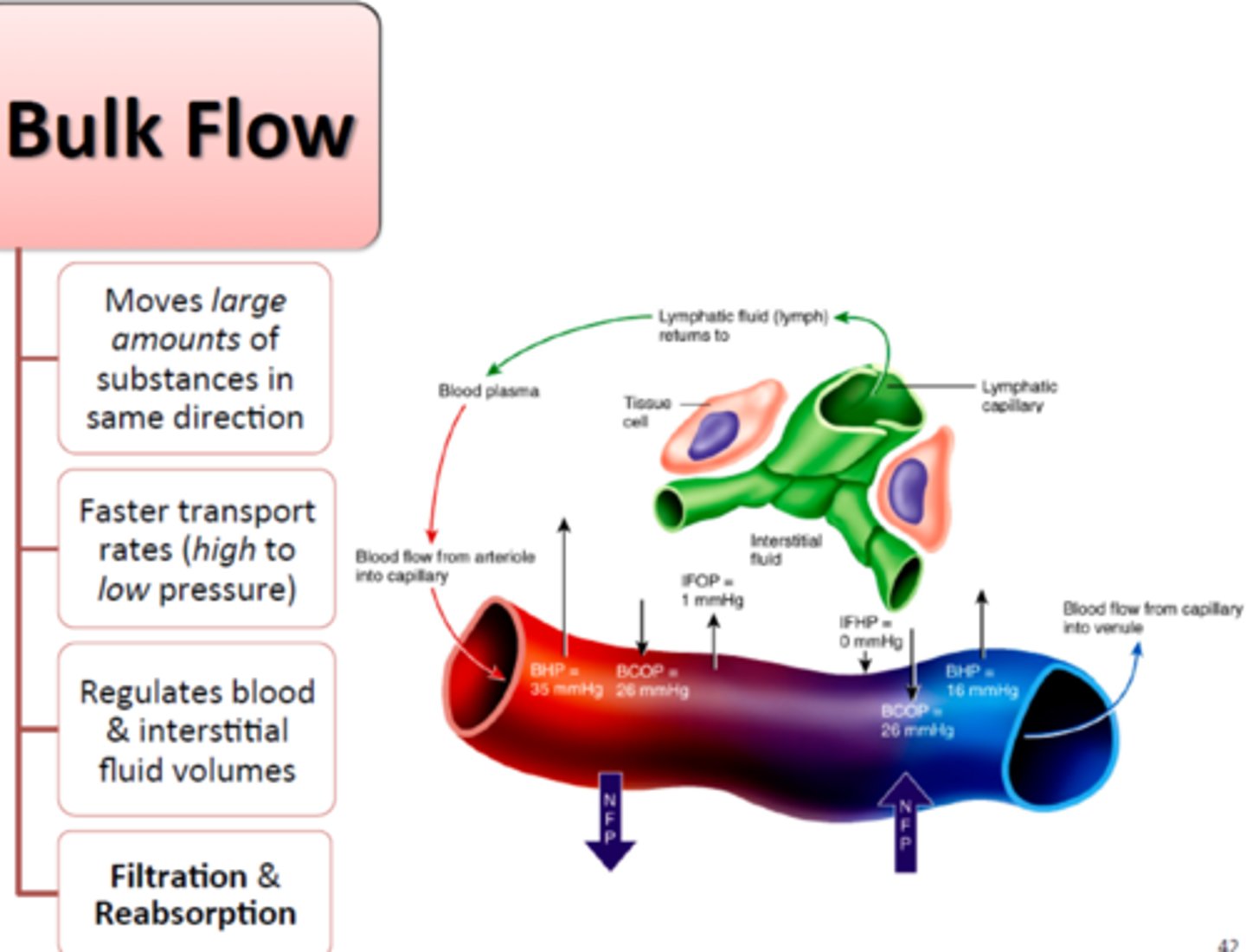
transports sodium out (3 Na+) of a cell while moving potassium (2 K+) into the cell.
The sodium-potassium pump, which is also called Na+/K+ ATPase, transports what into and out of the cell?
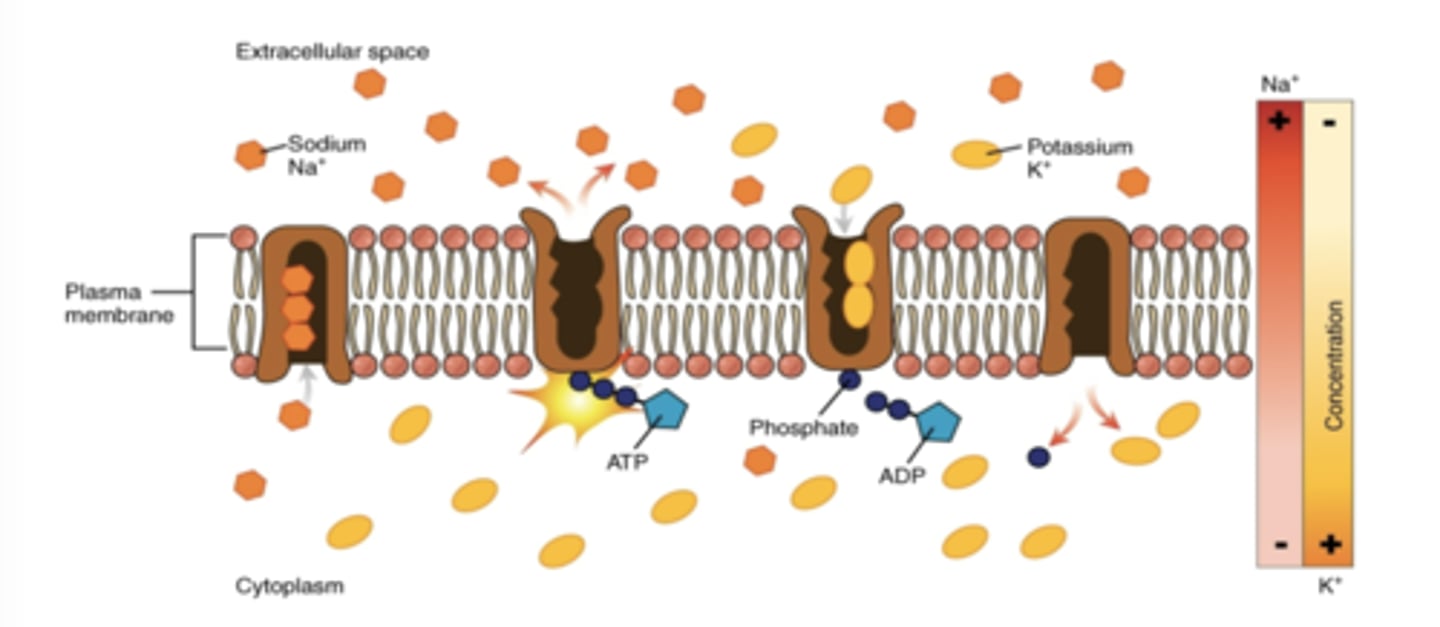
typically a lipoprotein that binds to the substrate and transport it to the other side. (Na+/K+ ATPase)
What is a active transport carrier and what does it do?
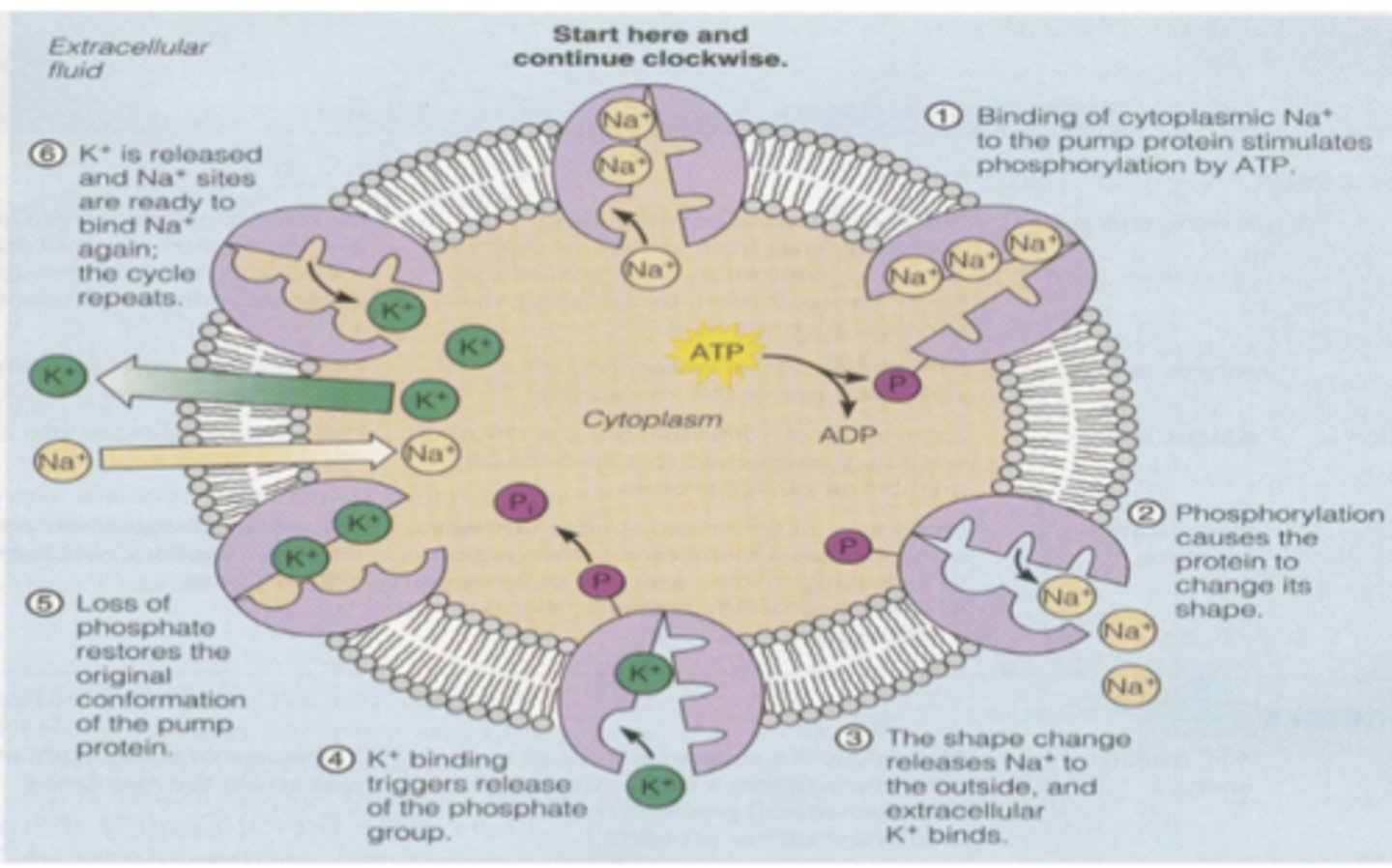
1. Water channels
2. Ion channels
3. Open channels
4. Gated channels
- chemically gated
- voltage gated
- mechanically gated
What are the 4 types of channels?
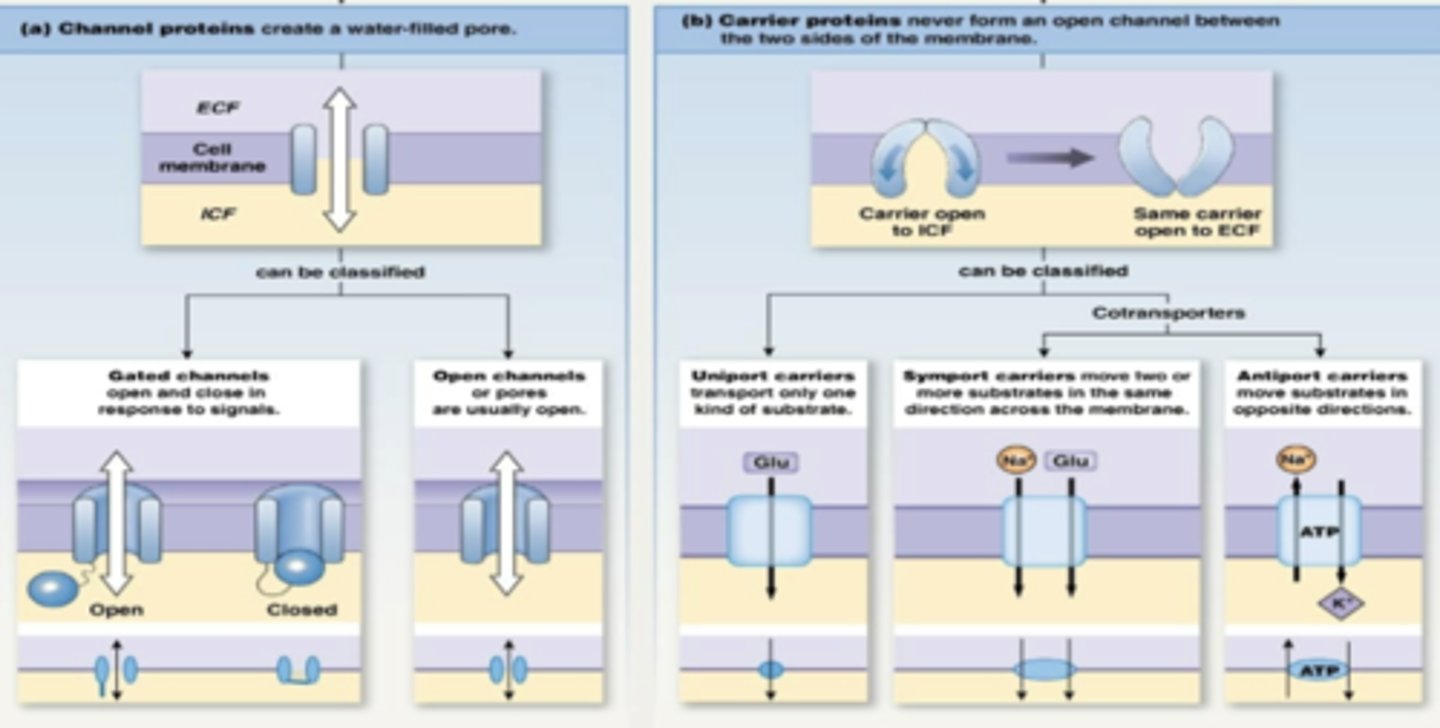
Secondary active transport
Antiporters are what type of transport mechanism?
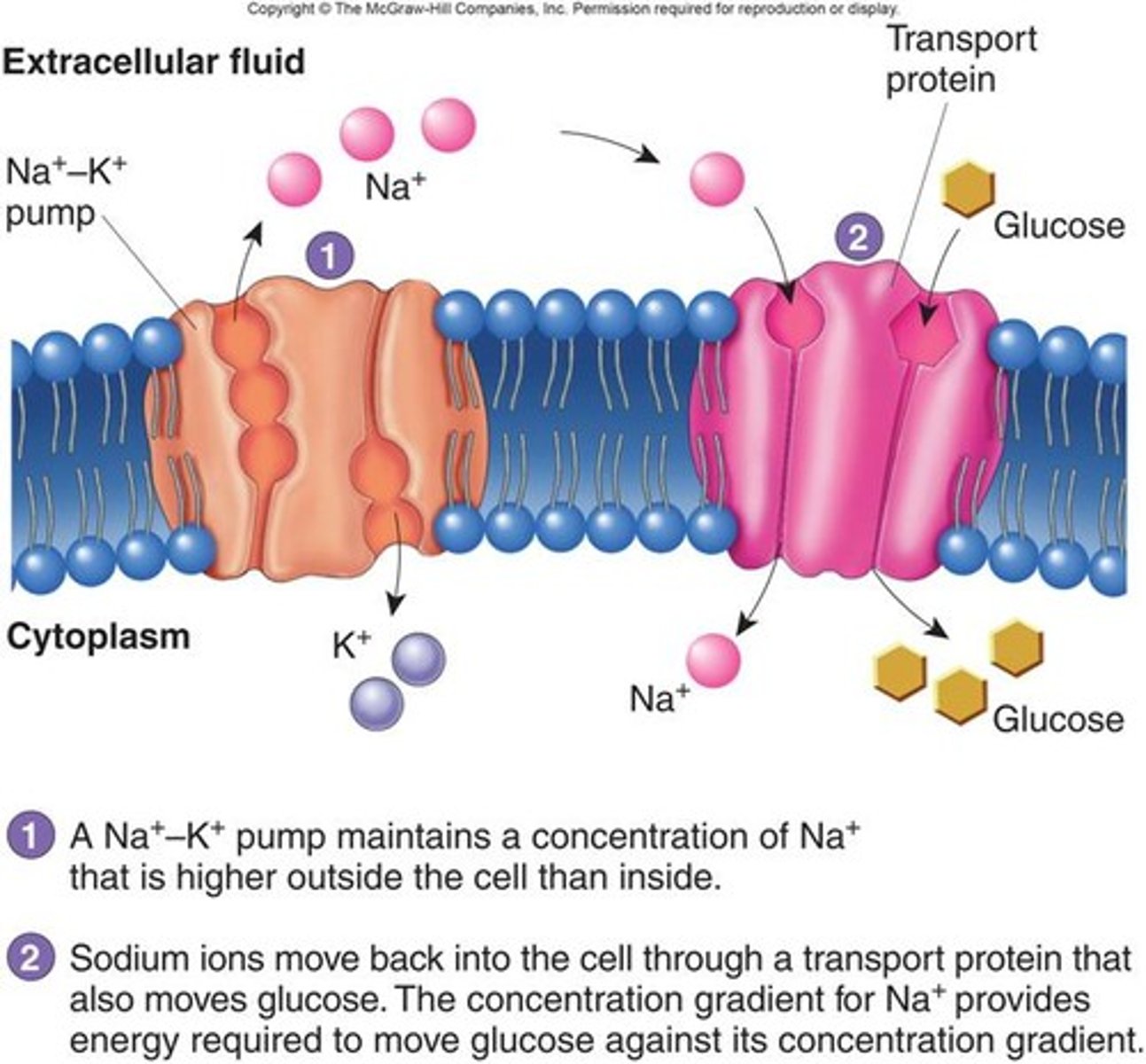
incorporate substrates to the cell. Phagocytosis for solids
Pinocytosis for liquids
- Cells ingest materials. The cellular membrane folds around the desired materials outside the cell. The ingested particle is trapped within a pouch, vacuole or inside the cytoplasm.
- Enzymes from Lysosomes are then used to digest the molecules absorbed by this process
What is Endocytosis?
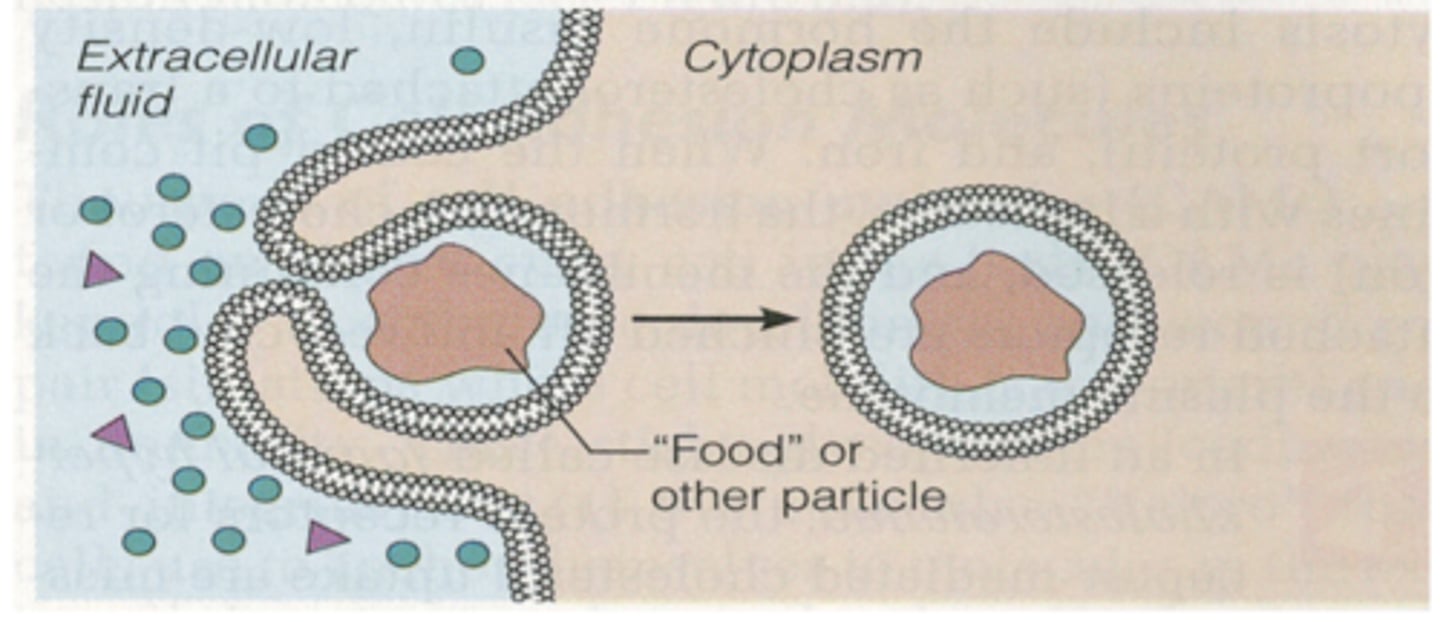
Cells engulf liquid particles
(in humans this process occurs in the small intestine, cells there engulf fat droplets)
What is Pinocytosis?

cells engulf solid particles
What is Phagocytosis?
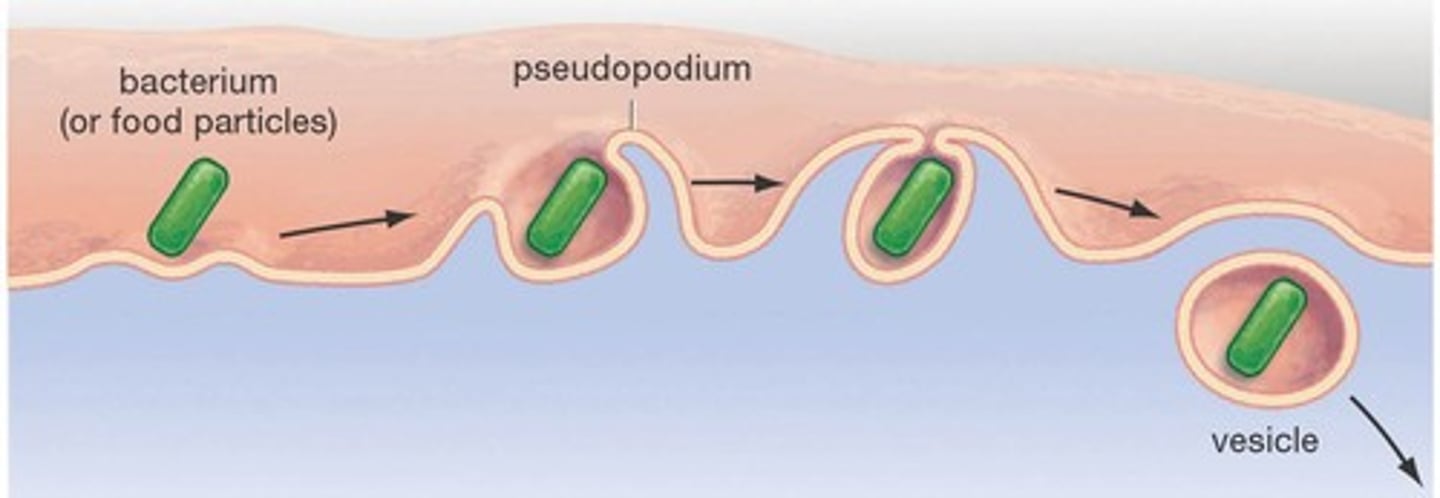
is the process by which cells excrete waste and other large molecules from the protoplasm
What is Exocytosis?
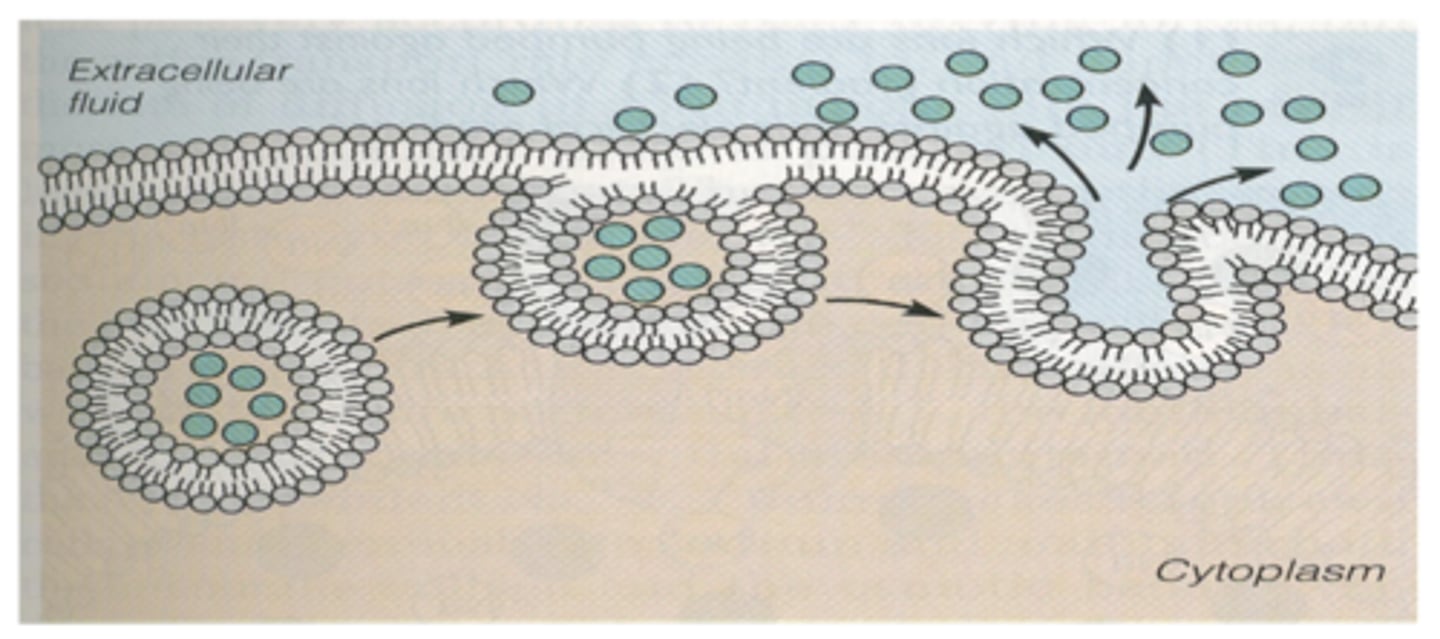
Action potential is a brief reversal of membrane potential in which the membrane potential changes from -70mV to +30mV
what is a Action Potential?
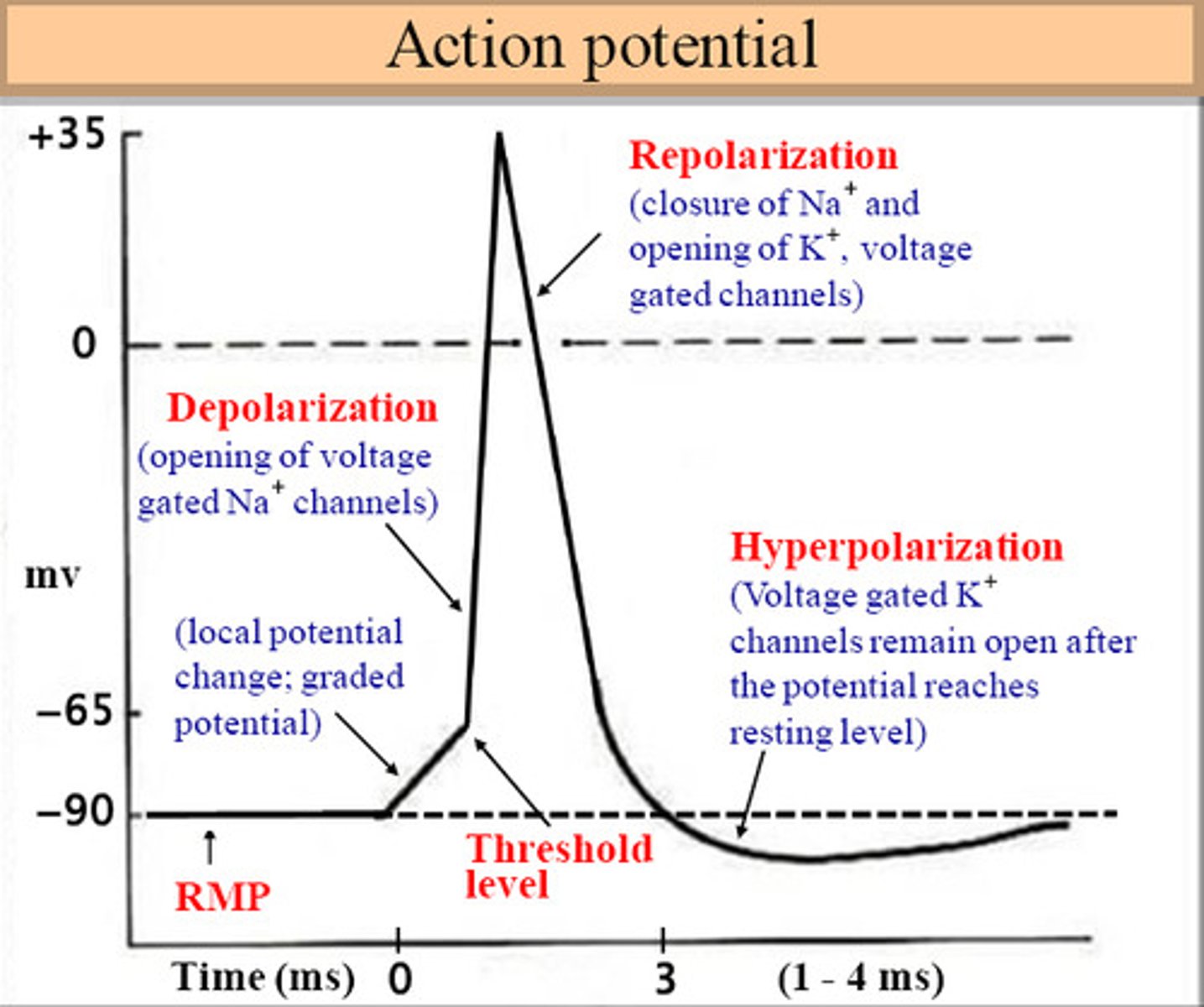
1. Depolarization
2. Repolarization
3. Hyper-polarization
What are the three main stages of a action potential?
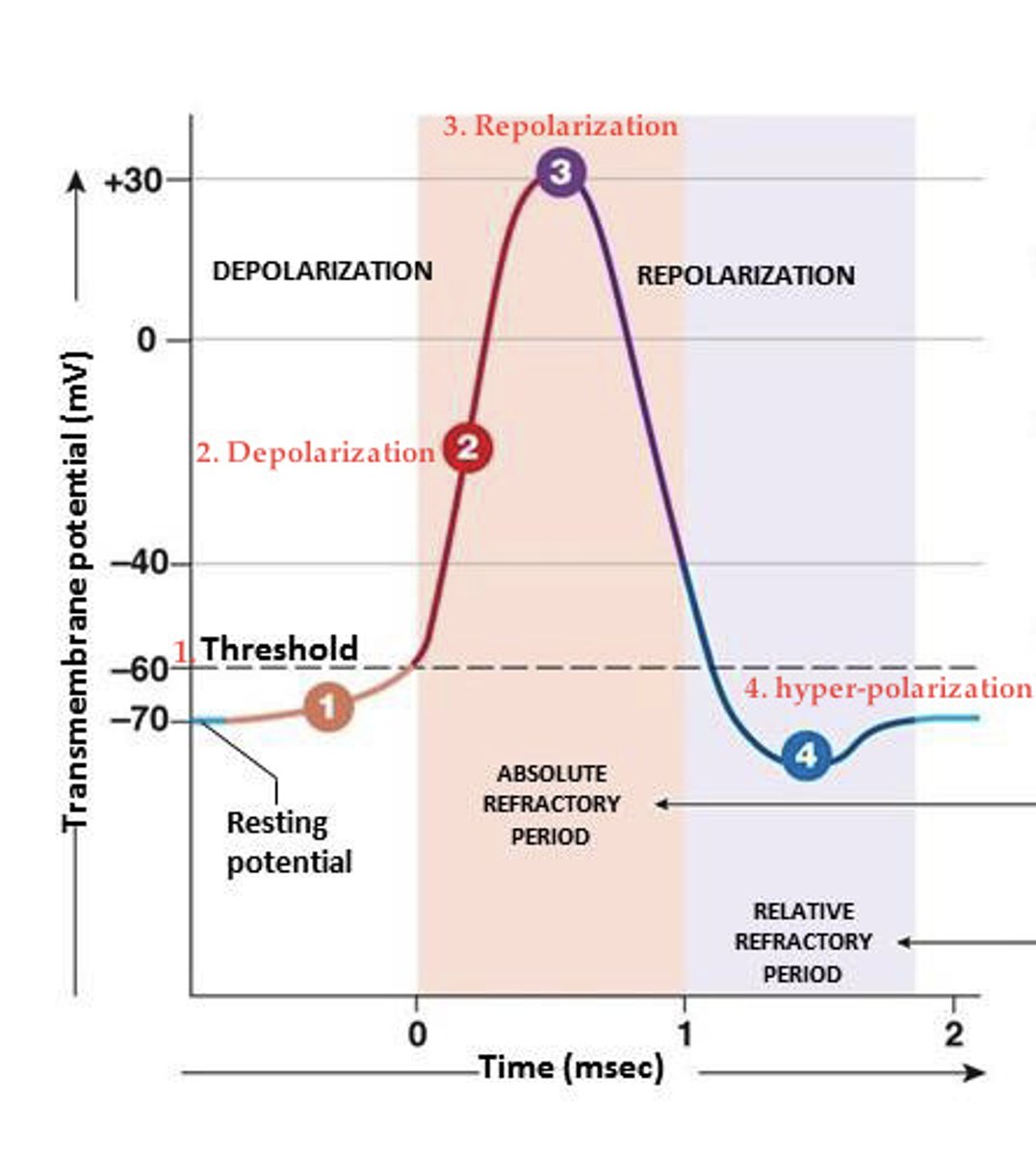
caused when positively charged sodium ions rush into a neuron with the opening of voltage-gated sodium channels.
What is Depolarization caused by?
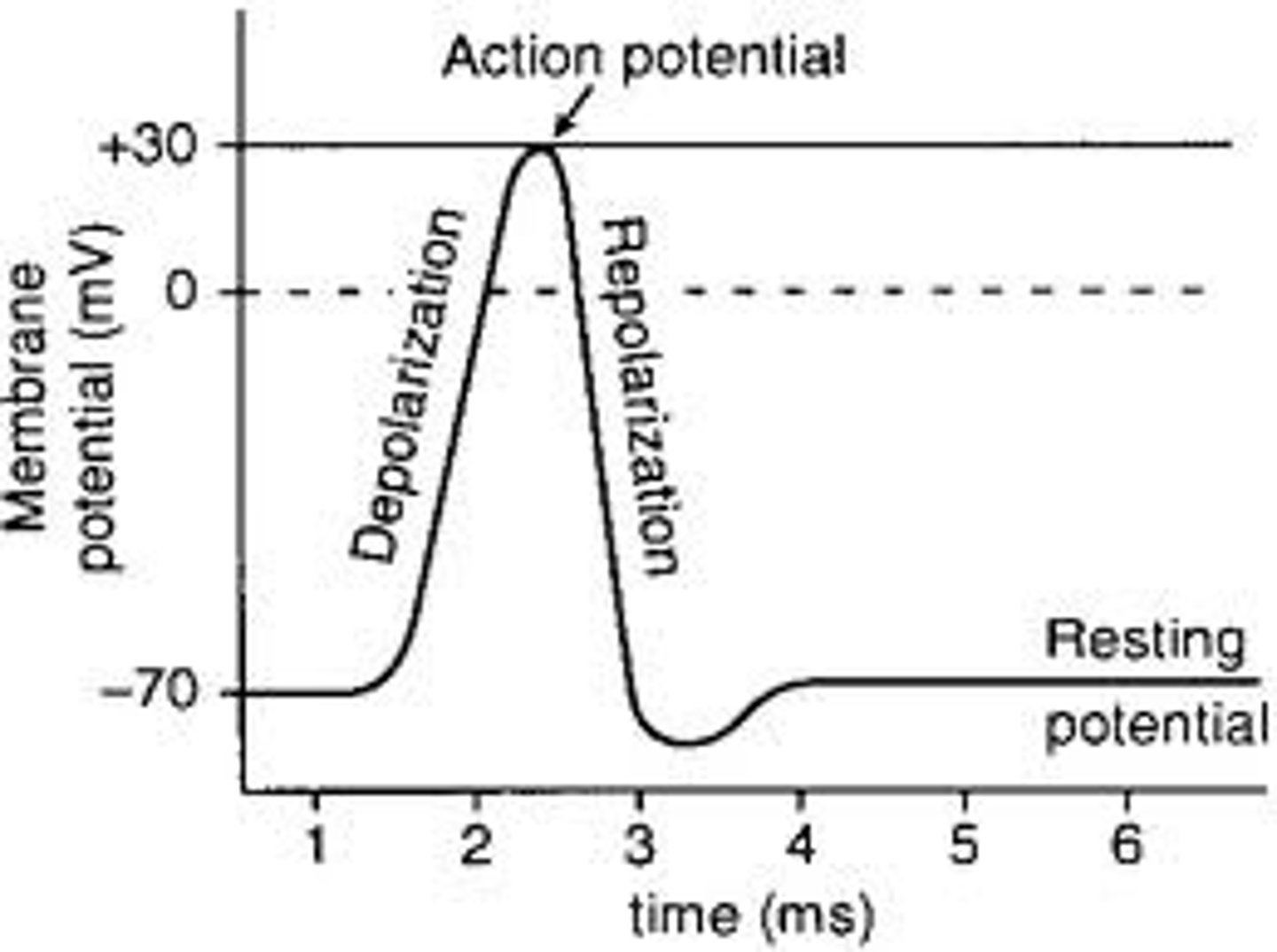
caused by the closing of sodium ion channels and the opening of potassium ion channels.
What is Repolarization caused by?
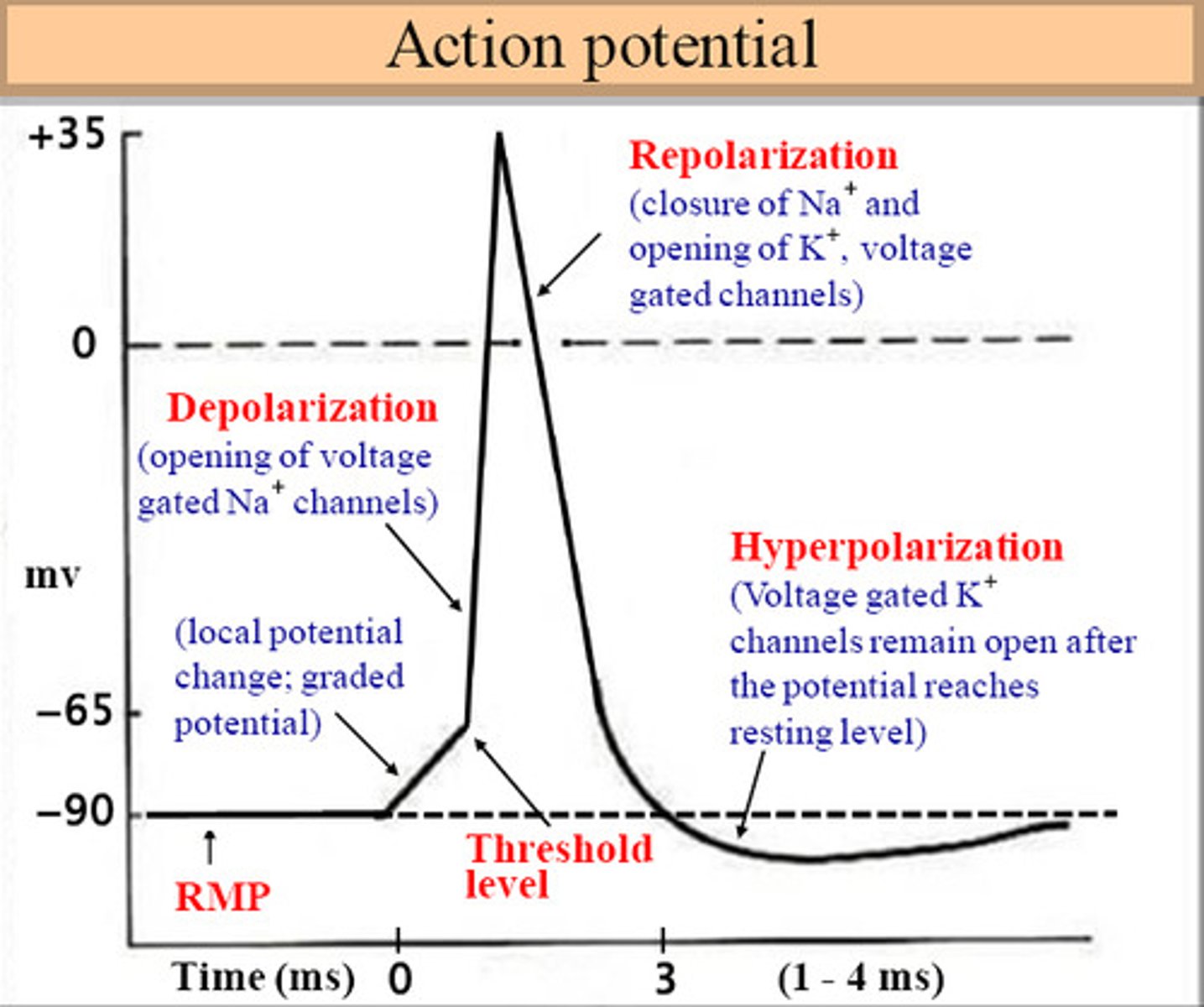
Hyperpolarization occurs due to an excess of open potassium channels and potassium efflux from the cell.
why does hyperpolarization occur?
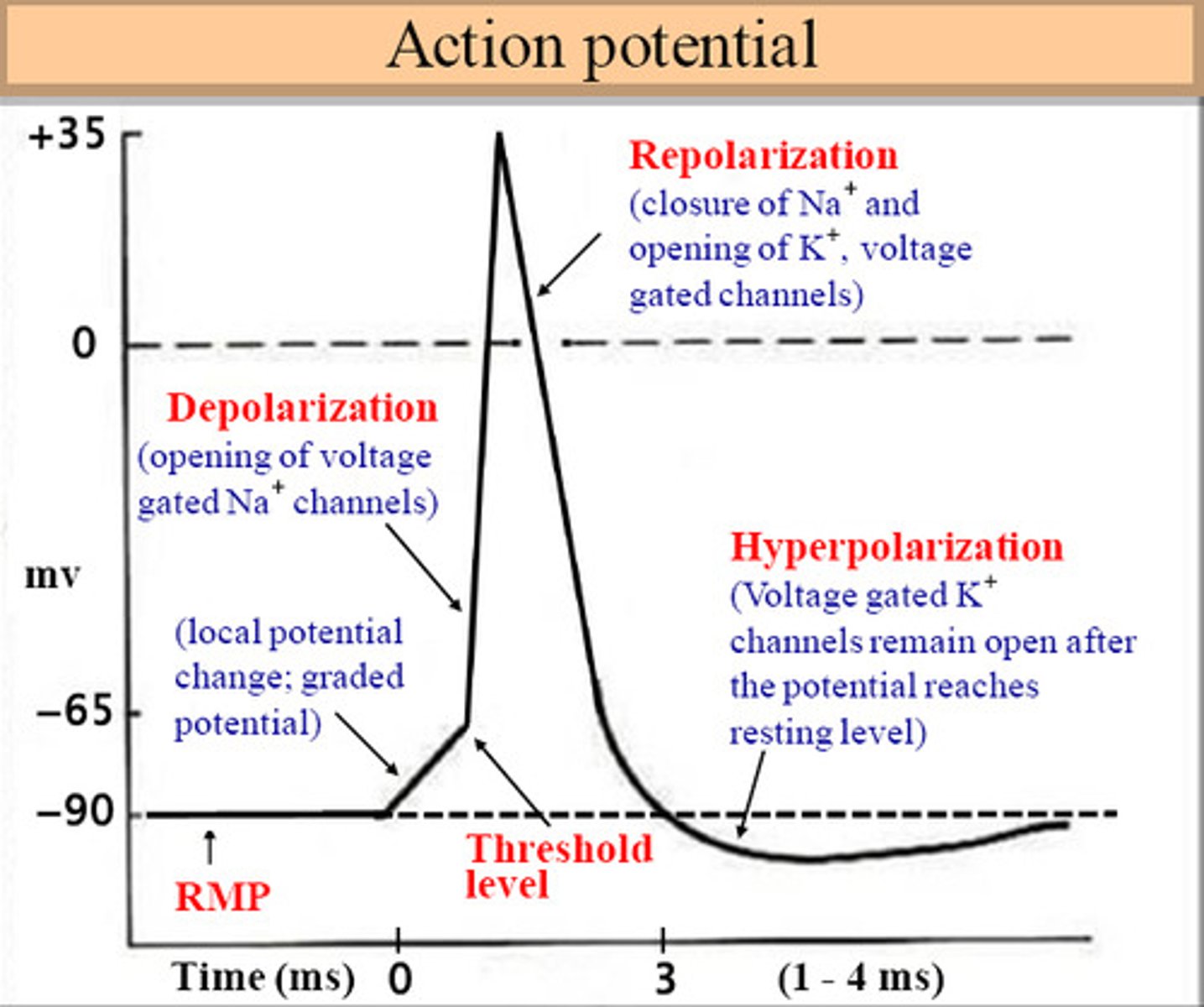
1. K+ concentration gradient
2. Cell's resting permeability to K+, Na+, and Cl-
What is resting membrane potential determined by? (2)

Gated channles
- mechanally
-chemically
-voltage
what channels control ion permeability?
The voltage between the inside and outside of the cell across the membrane from -70mv to 90mv.
- determined by the cell type and the levels of K+ (most important electrolyte in the body)
What is the resting cell membrane potential?
When the membrane potential of a cell can go for a long period of time without changing significantly.
What is the resting potential?
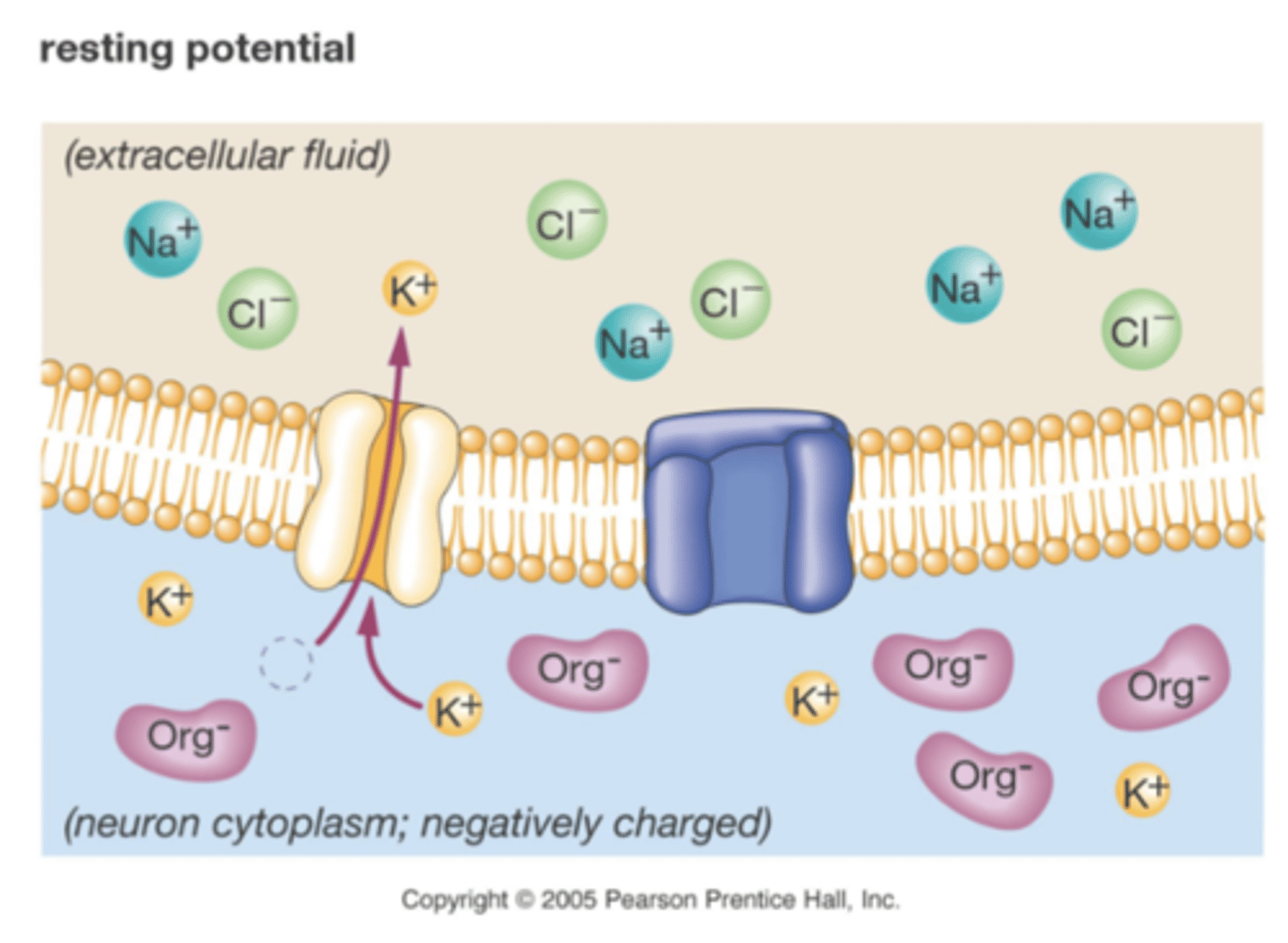
The membrane potential is the difference in electric potential between the interior and the exterior of a biological cell. (Usually negative)
What is Membrane potential?
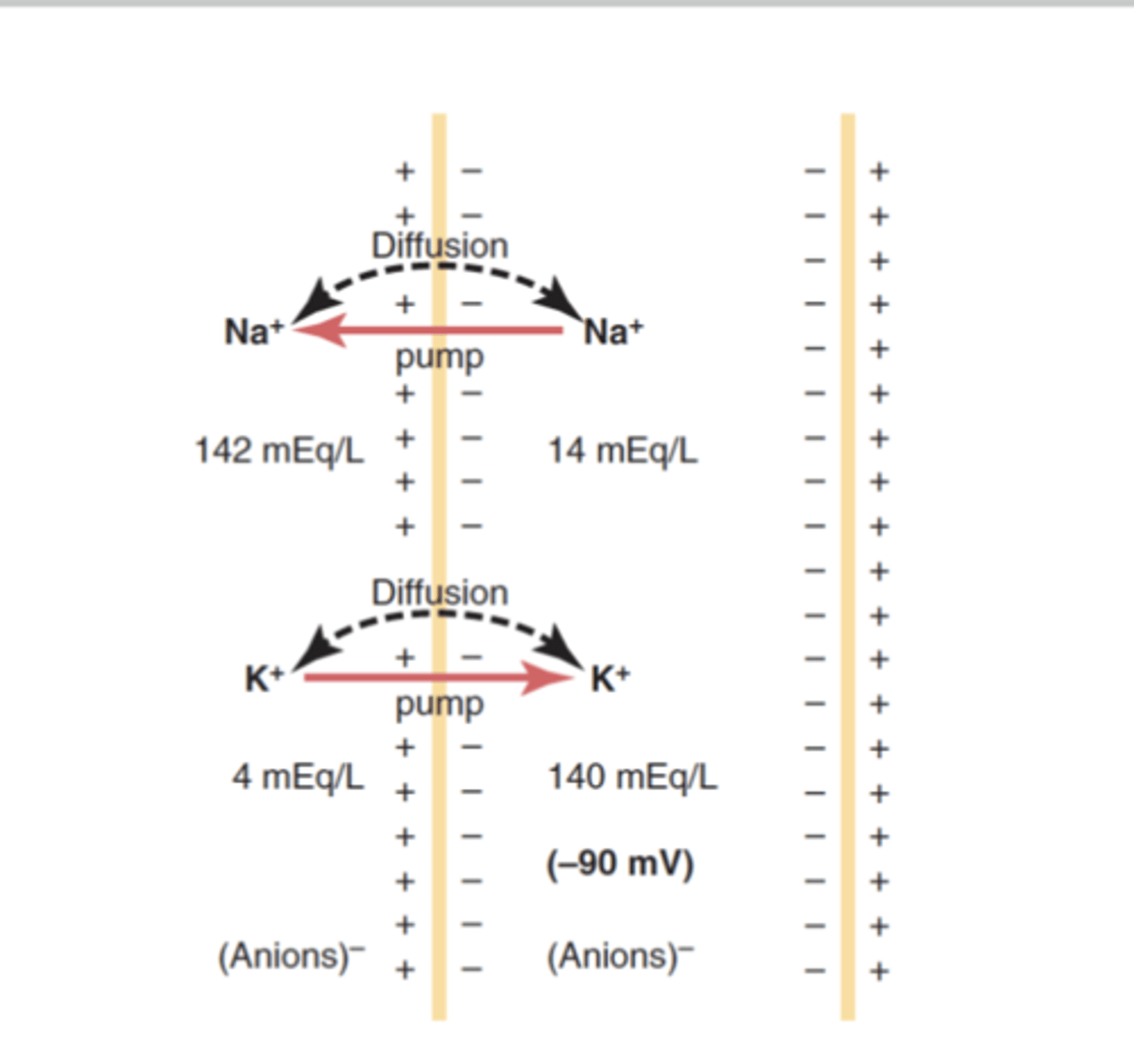
1. Allows a cell to function as a battery, providing power to operate a variety of molecular machines embedded in the membrane.
2. Helps activate cell function
3. In electrically excitable cells such as neurons and muscle cells, it is used for transmitting signals between different parts of a cell
What does membrane potential do for cells? (3)
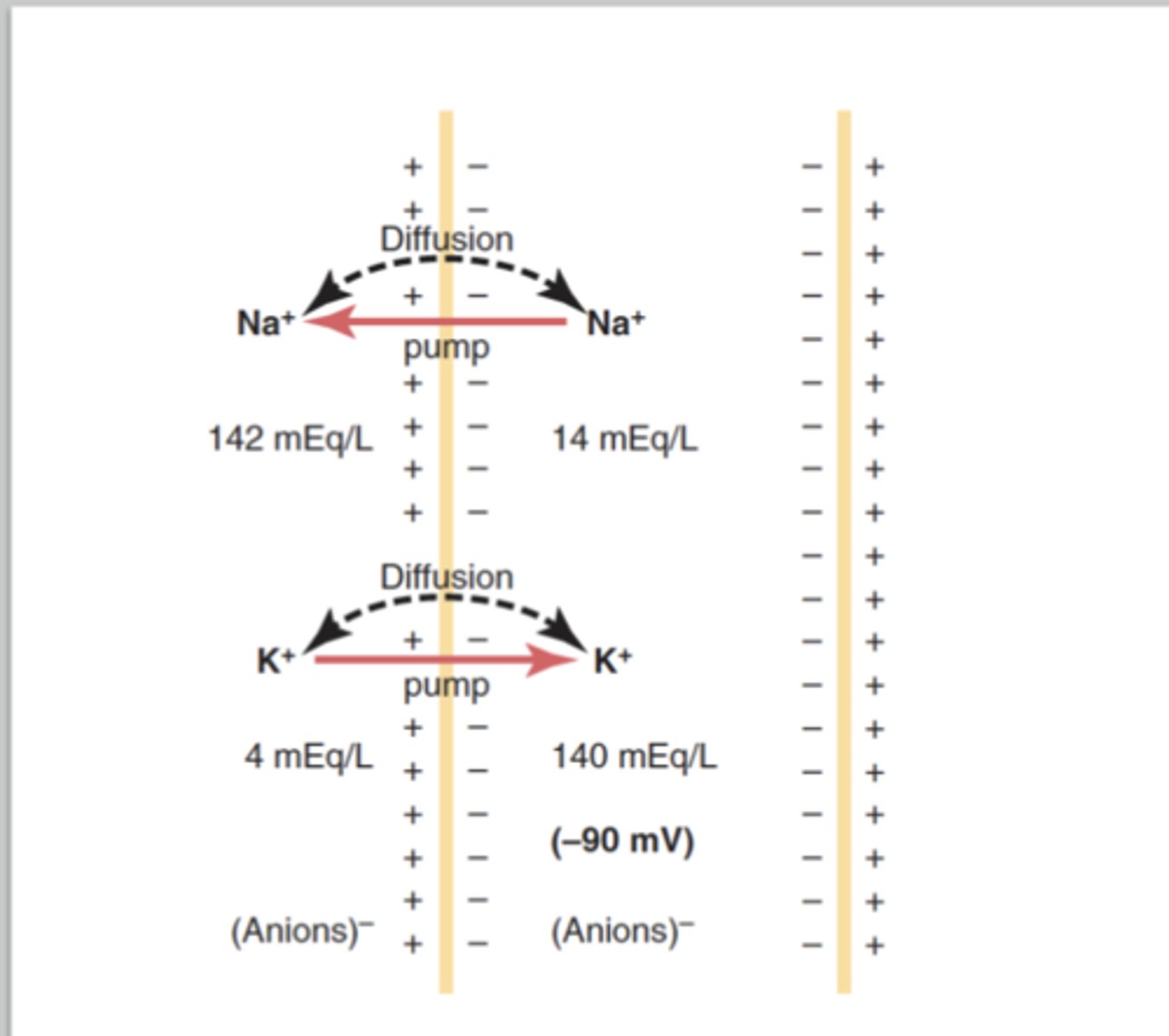
Threshold potential is the critical level that a membrane must depolarize to initiate an action potential.
What is threshold potential?
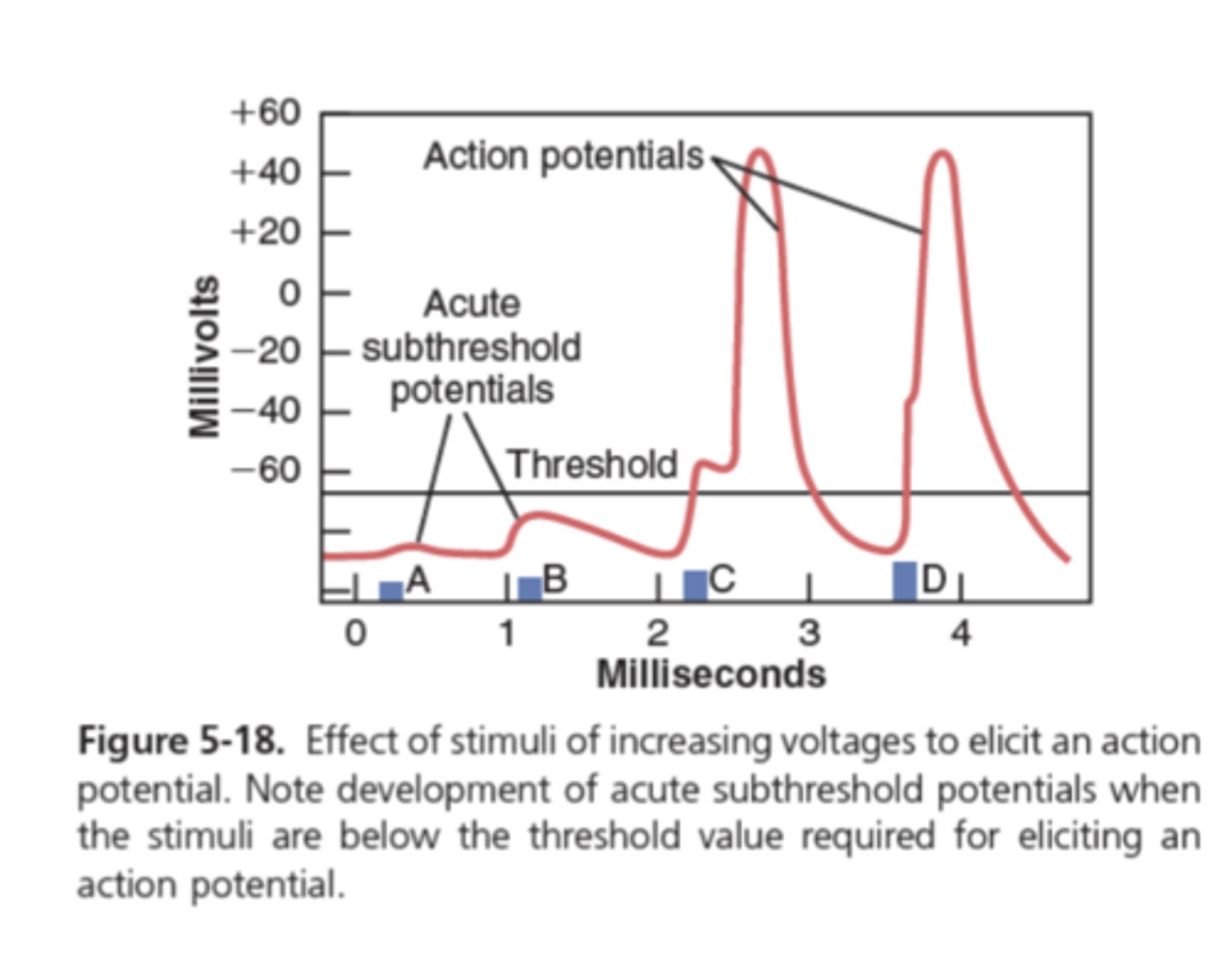
action potential will cause an inversion of the membrane potential voltage and drive cellular machinery to perform a function (e.g. transmit a signal, contract a muscle, secrete a substance, etc.)
What does a action potential cause?
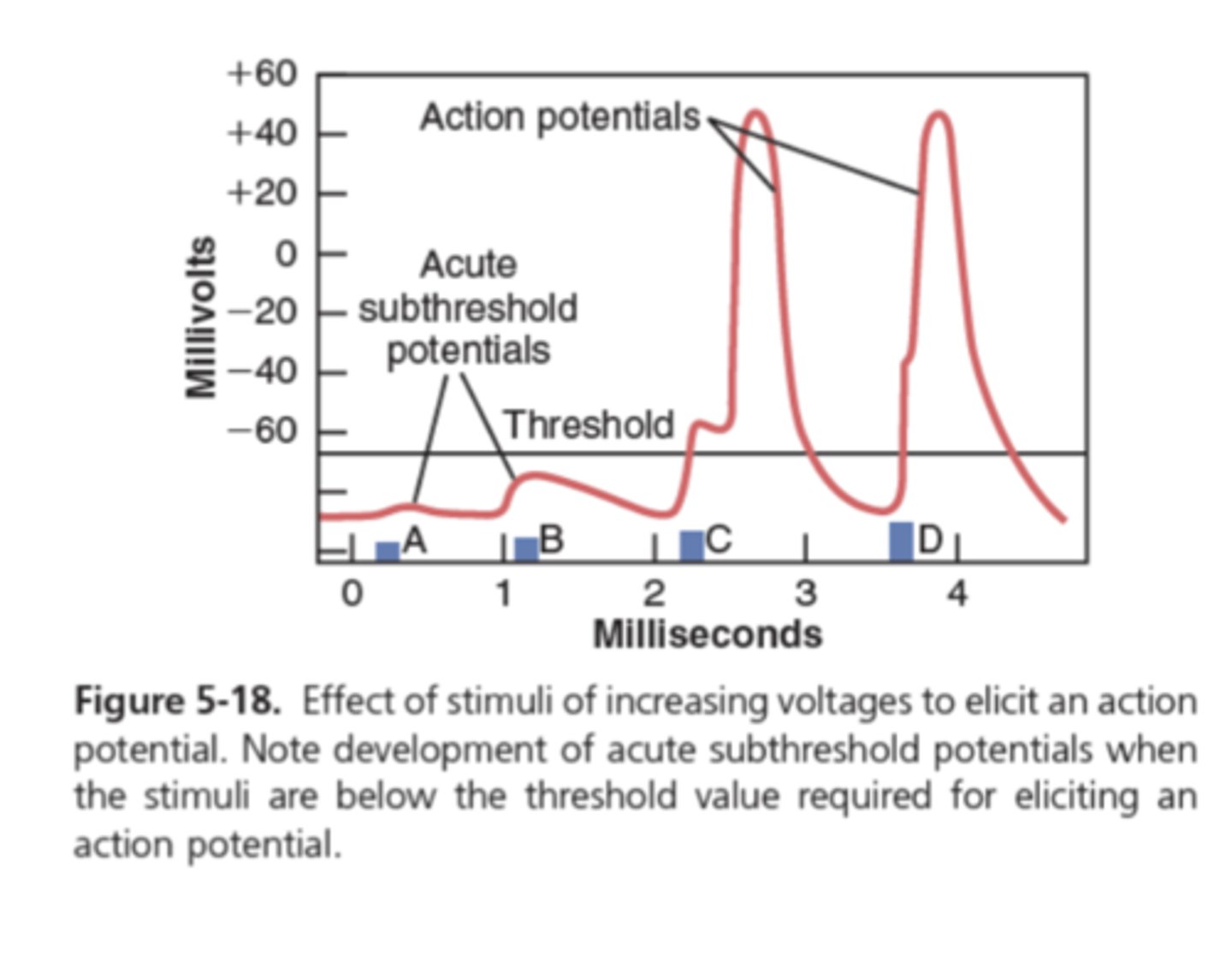
depolarization, or the rising phase, is caused when positively charged Na+ ions suddenly rush through open voltage-gated sodium channels into a neuron.
What causes the depolarization or rising phase?
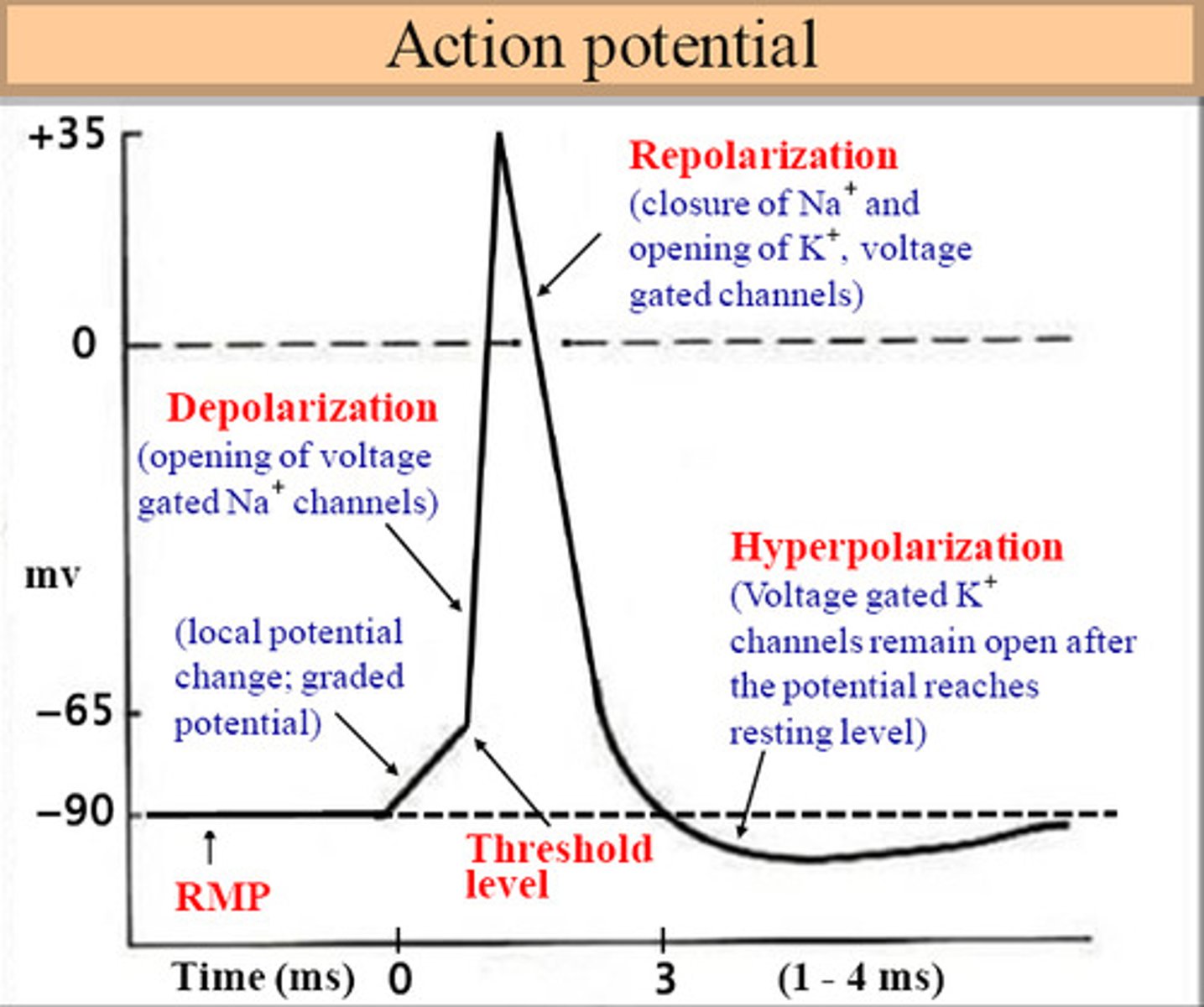
repolarization or falling phase is caused by the slow closing of Na+ channels and the opening of voltage-gated K+ channels.
the membrane permeability to Na+ declines to resting levels. As the Na+ ion entry declines, the slow voltage-gated potassium channels open and potassium ions rush out of the cell.
What is the repolarization or falling phase caused by?
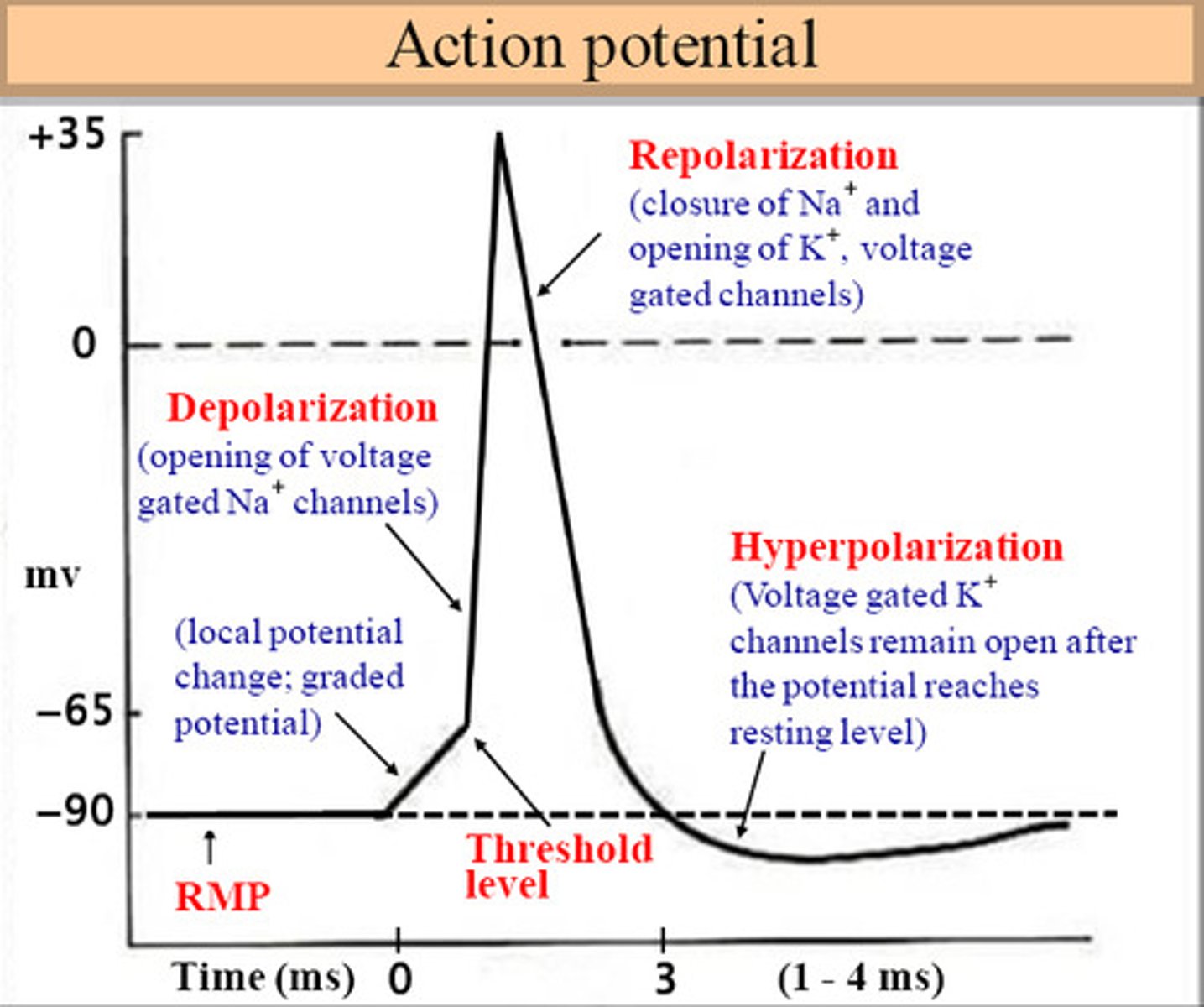
Graded potentials are changes in membrane potential that vary in size, as opposed to being all-or-none
What are graded membrane potentials?
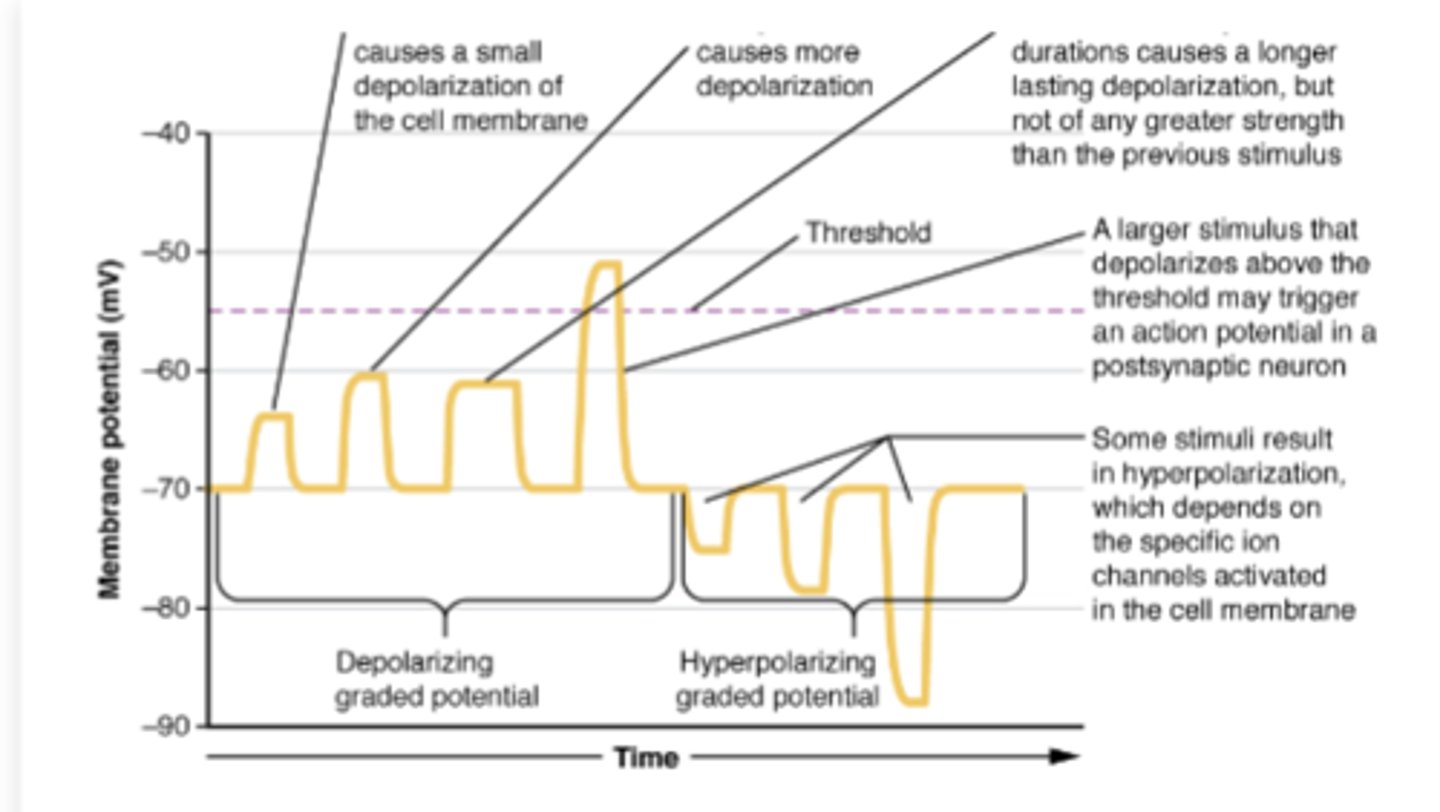
- arise from the summation of the individual actions of ligand-gated ion channel proteins, and decrease over time and space.
- Do not typically involve voltage-gated sodium and potassium channels
What do graded membrane potentials arise form? What do they not typically involve?
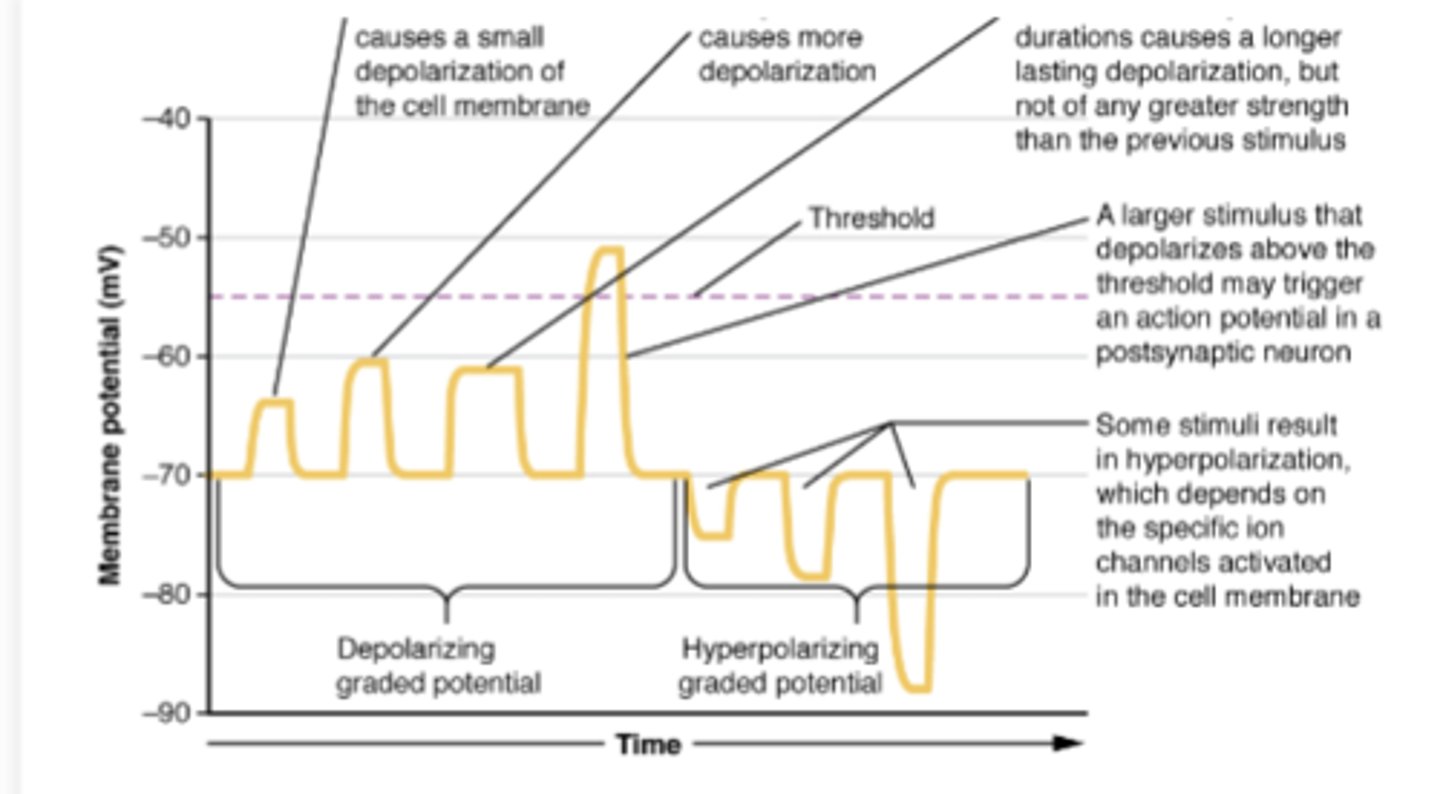
Action potentials are the change in electrical potential associated with the passage of an impulse along the membrane of a muscle cell or nerve cell.
What are action potentials?
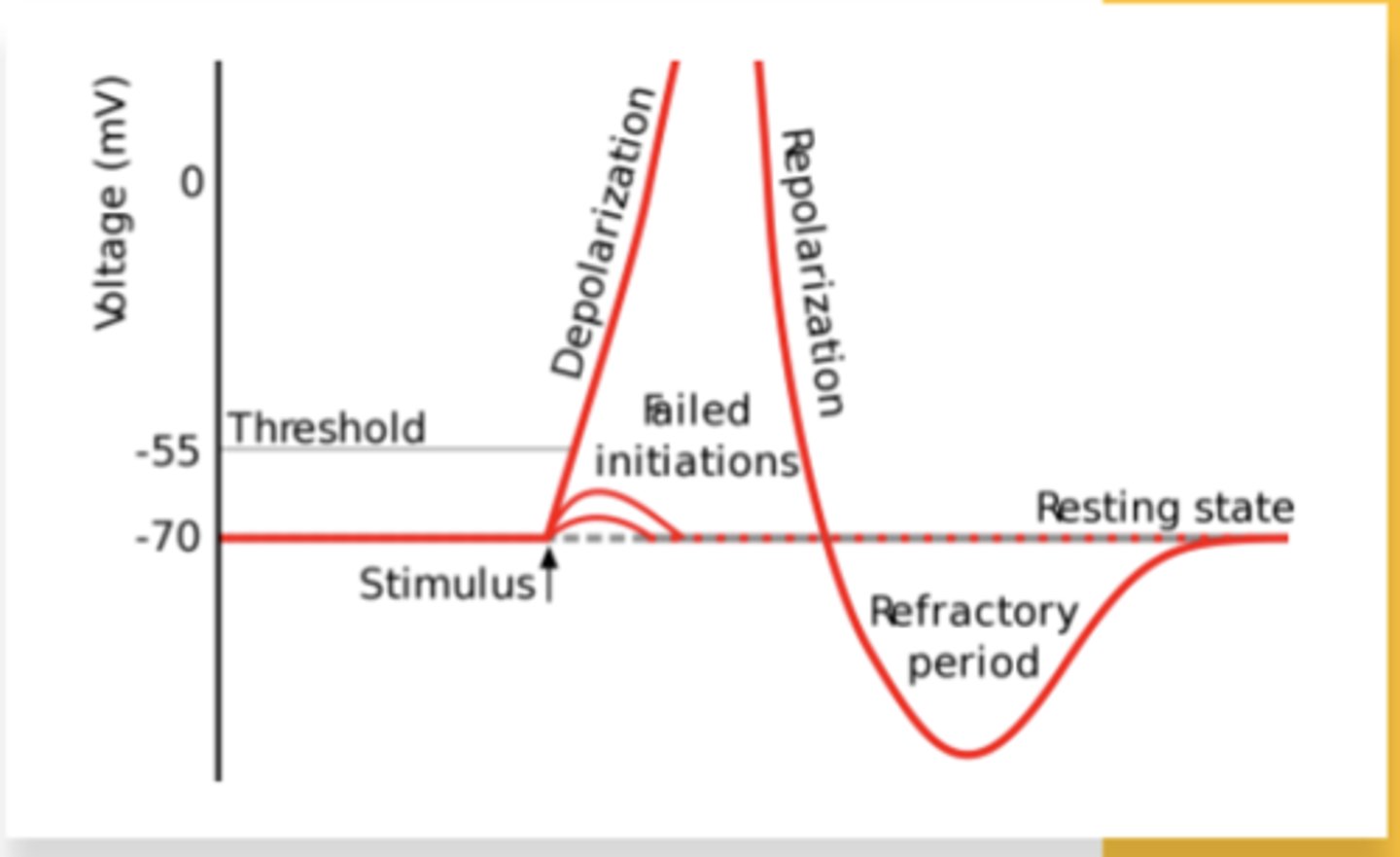
Independent
The amplitude of an action potential is _______ of the amount of current that produced it.
False
Do larger currents create larger action potentials?
all-or-none
Action potentials are a ________ response, since they either occur fully or not at all.
Frequency
What encodes for the intensity of a stimulus of an action potential?
the electrical charges of the ions cause them to move through the membrane even though no concentration difference exists to cause movement!
(the positive ions attract the negative ones)
What happens if a electrical potential is applied across the membrane?
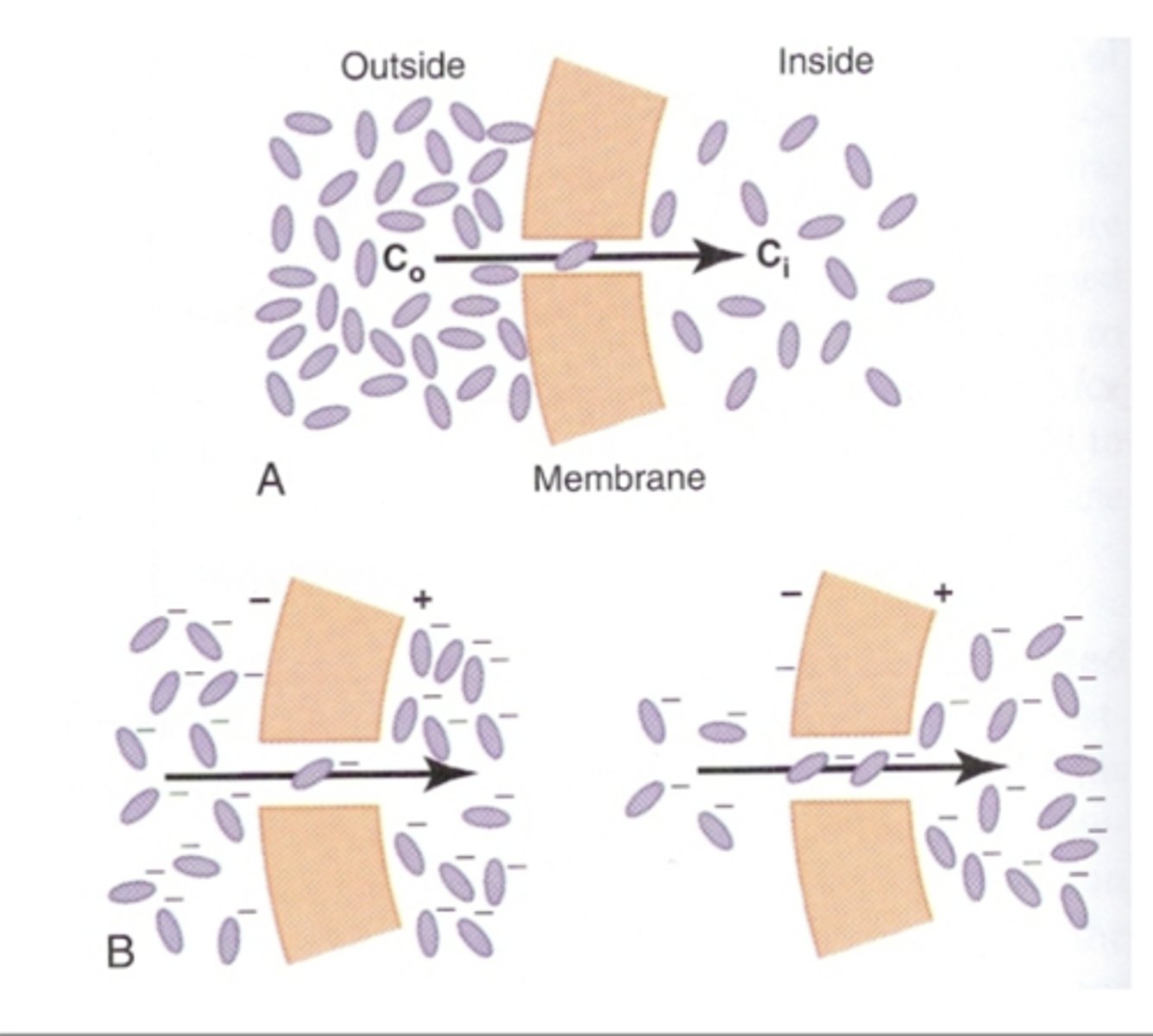
The intracellular [K+] greatly exceeds the extracellular concentration (~130mmol/L vs ~4mmol/L). Thus, K+ ions will tend to exit the cell according to the concentration gradient.
How does the concentration gradient influence the movement of ions across the cell membrane?

As positively charged K+ ions are released, the charge of the intracellular space becomes relatively negative. Hence, some K+ ions are attracted back towards the intracellular space, despite the concentration gradient leading them in the opposite direction.
How does the electrical gradient influence the movement of ions across the cell membrane?
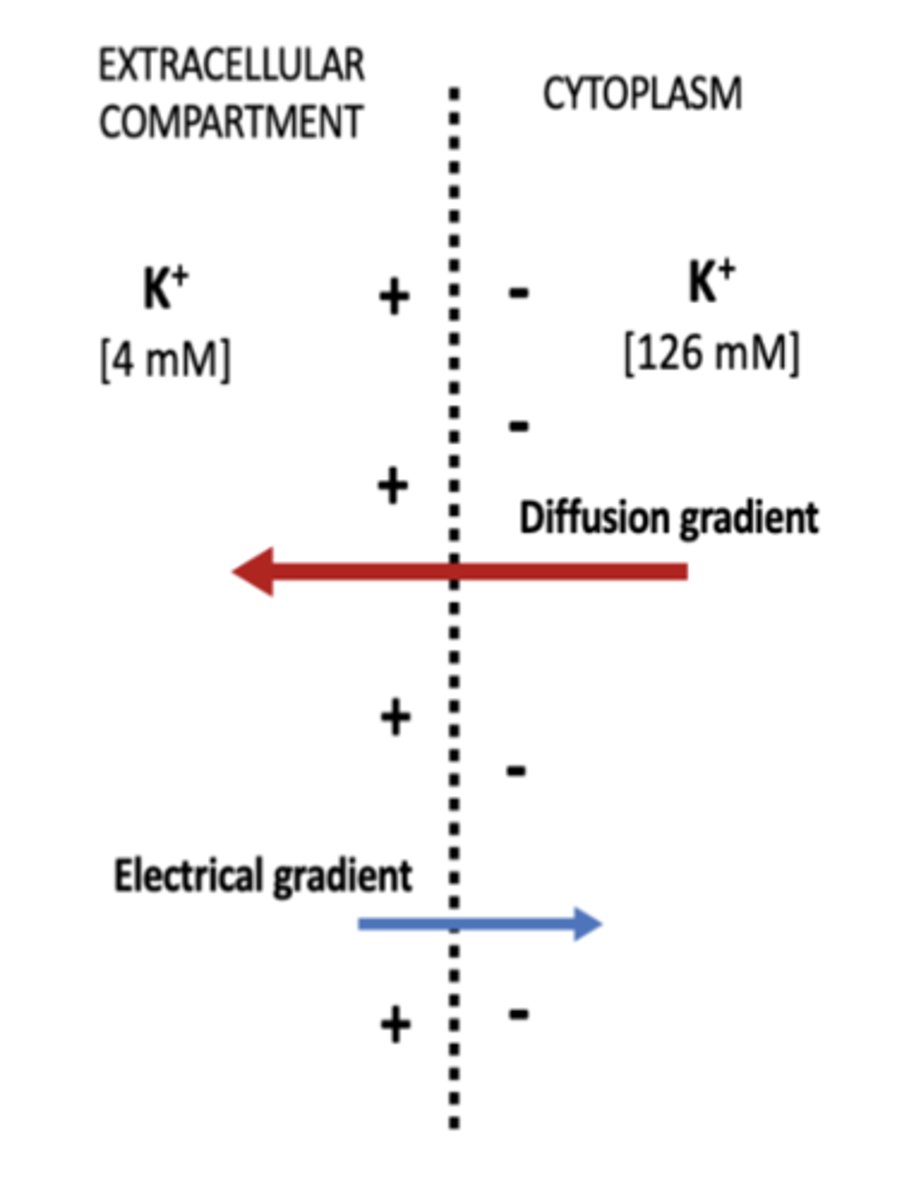
Equal
At the equilibrium potential, the rate at which ions leave by concentration gradient is ______ to the rate at which ions enter via the electrochemical gradient
equilibrium potential for that particular ion.
In a cell where only one type of ion can cross the membrane, the resting membrane potential will equal the_______.
The Nernst equation is used to calculate the value of the equilibrium potential of a particular cell for a particular ion.
What is the Nernst Equation used for?

Action potentials
Nerve signals are transmitted by _______, which are rapid changes in the membrane potential that spread rapidly along the nerve fiber membrane.
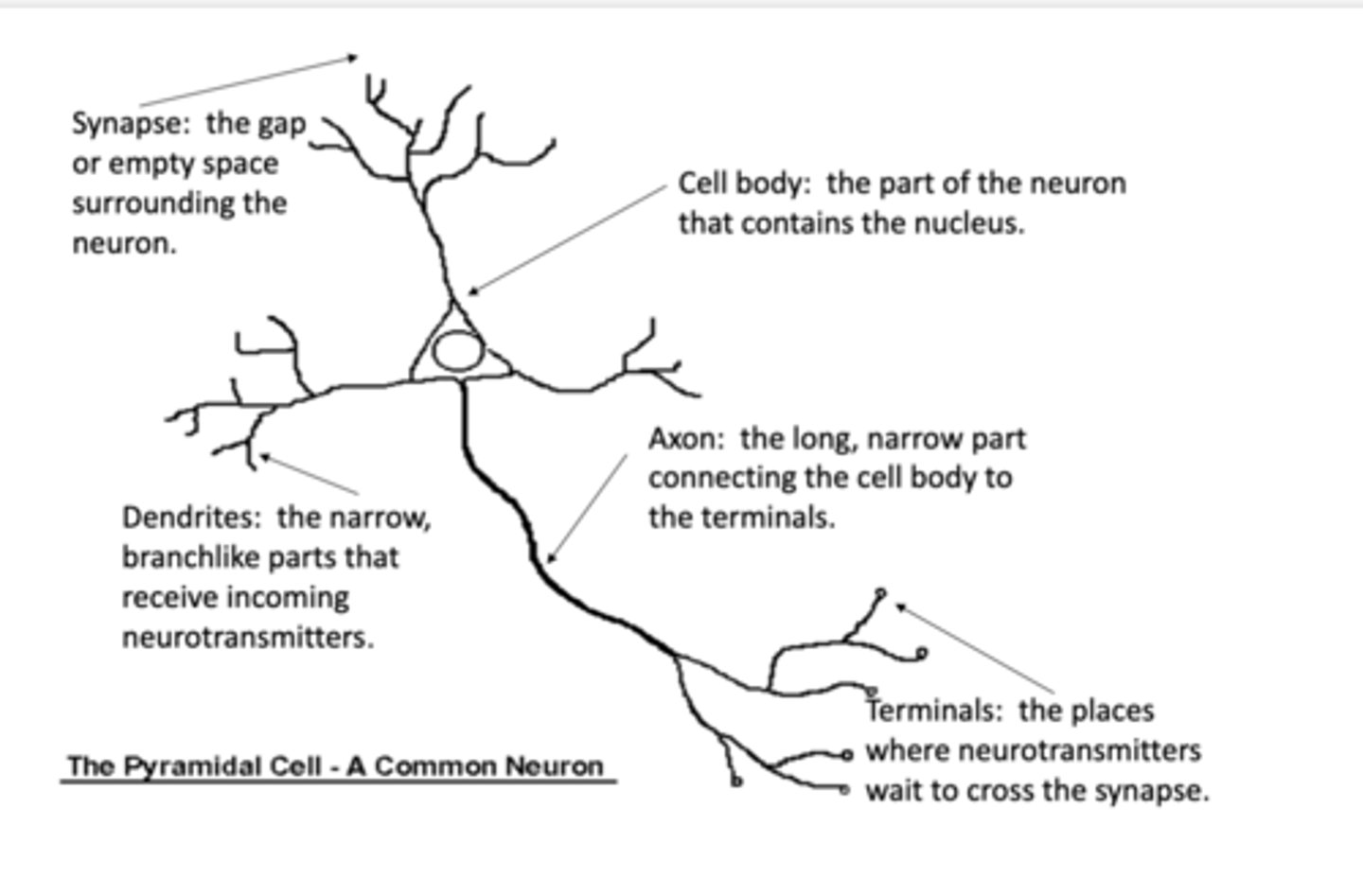
Negative potential
Each action potential begins with a sudden change from the normal resting negative membrane potential to a positive potential and then ends with an almost equally rapid change back to _________
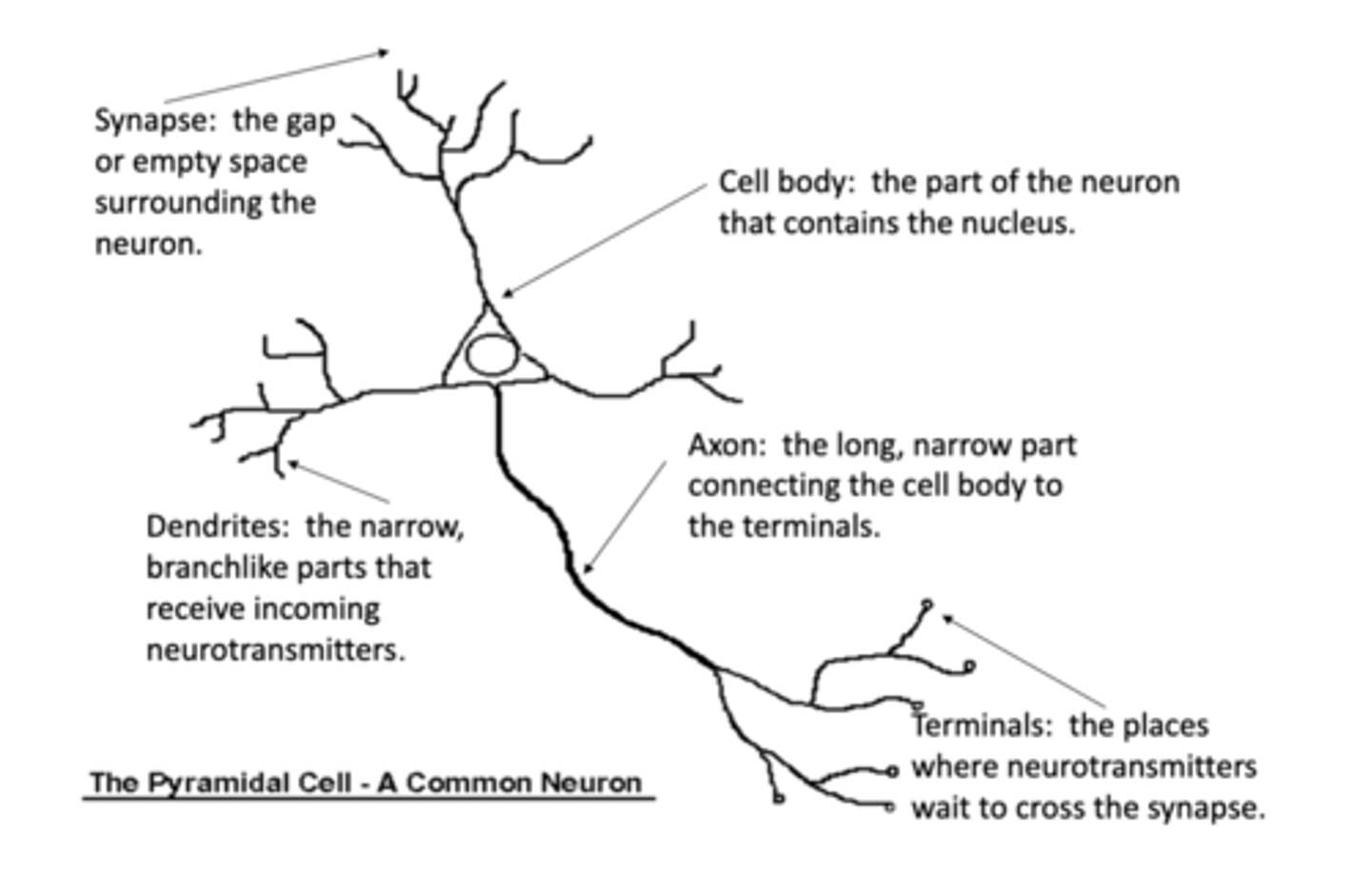
nerve fiber until it comes to the fiber's end.
To conduct a nerve signal, the action potential moves along the ___________

The gap or empty space surrounding the neuron
Synapse

The part of the neuron that contains the nucleus
Cell body
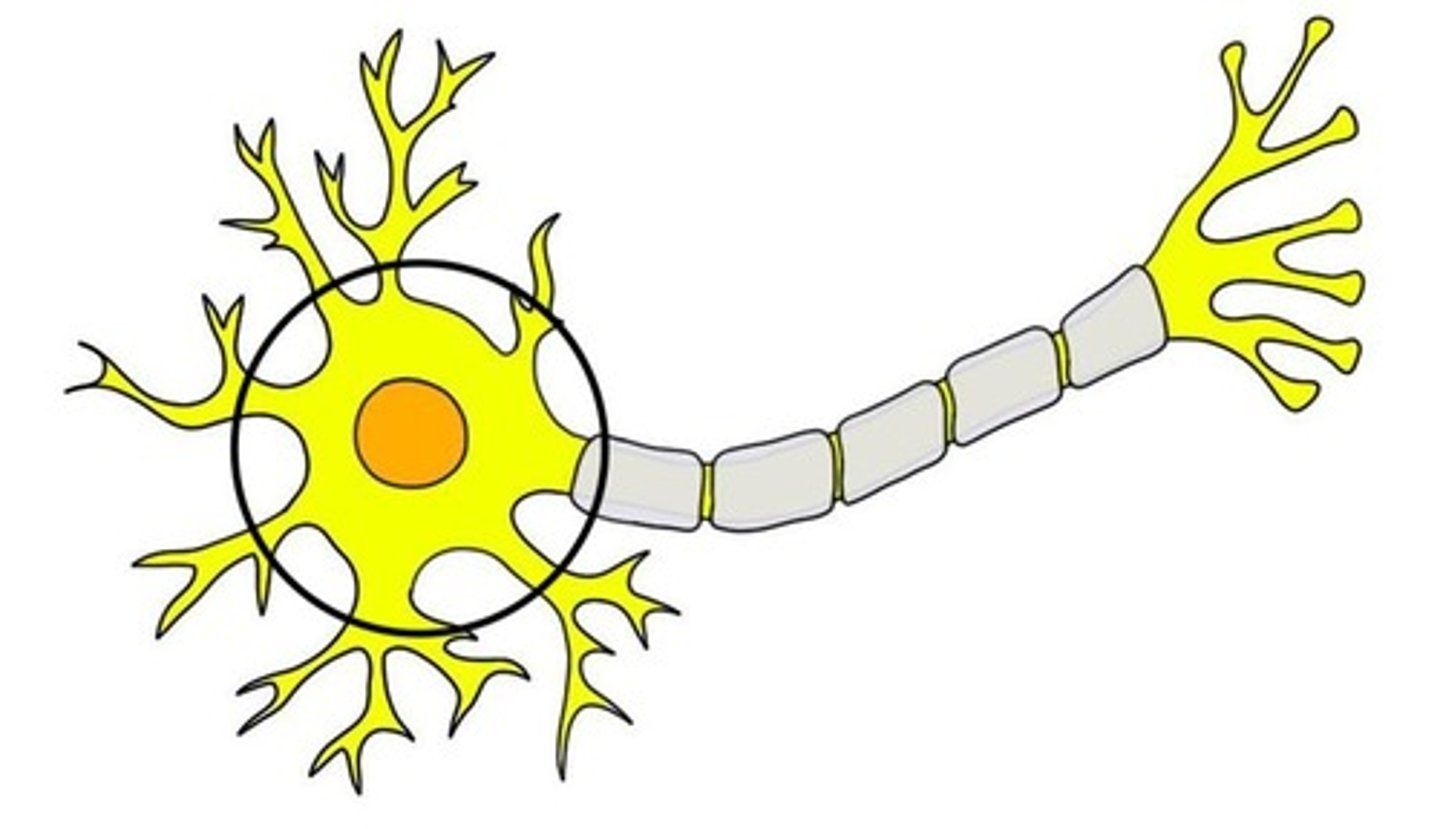
the long, narrow part connecting the cell body to the terminals
Axon

The narrow, brach-like parts that receive incoming neurotransmitters
Dendrites
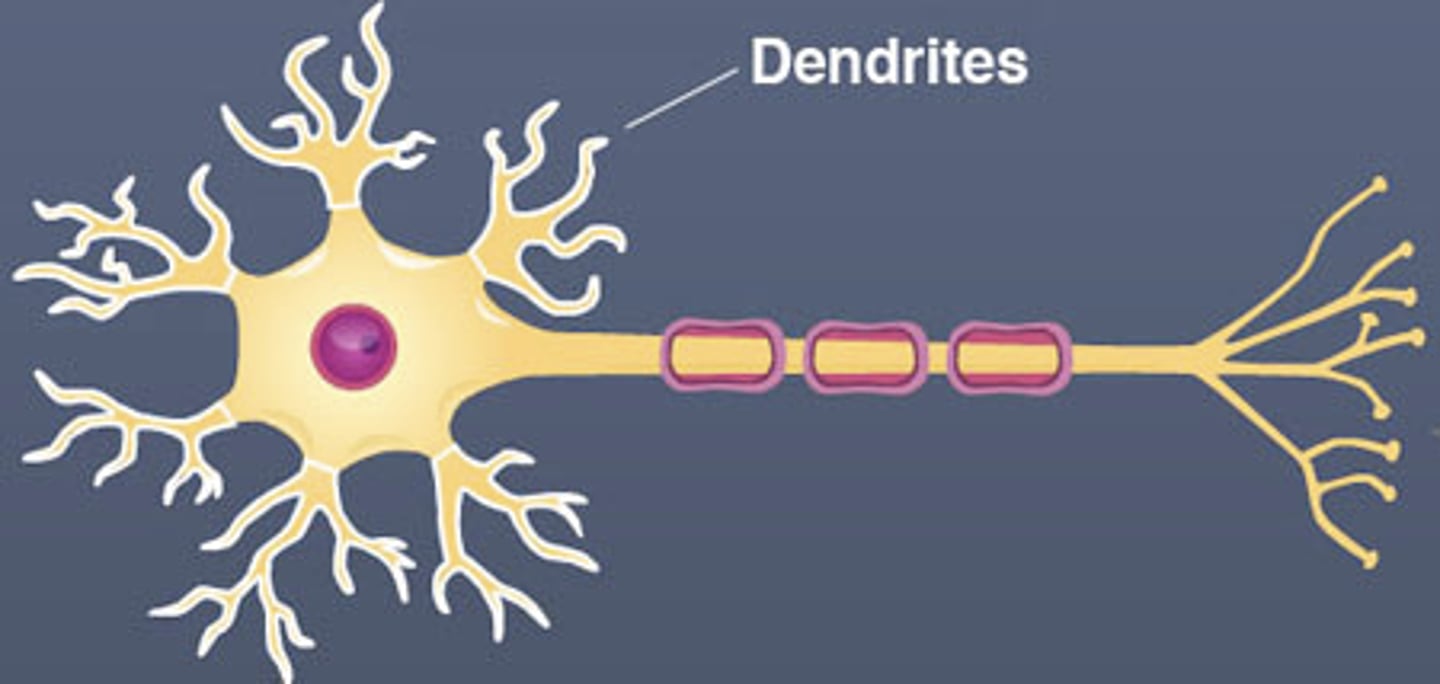
The places where neurotransmitters wait to cross the synapse
Terminals
